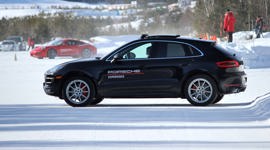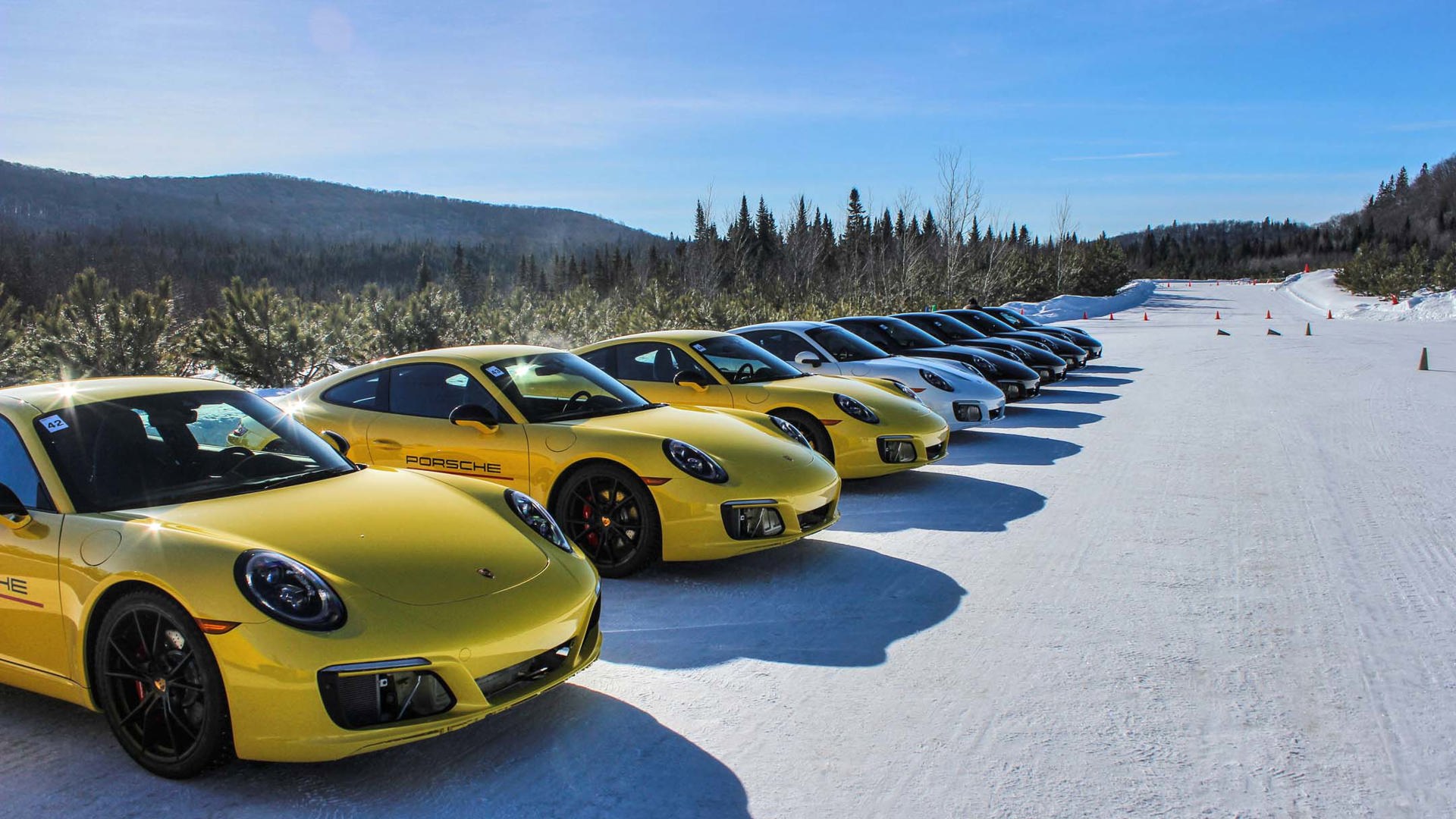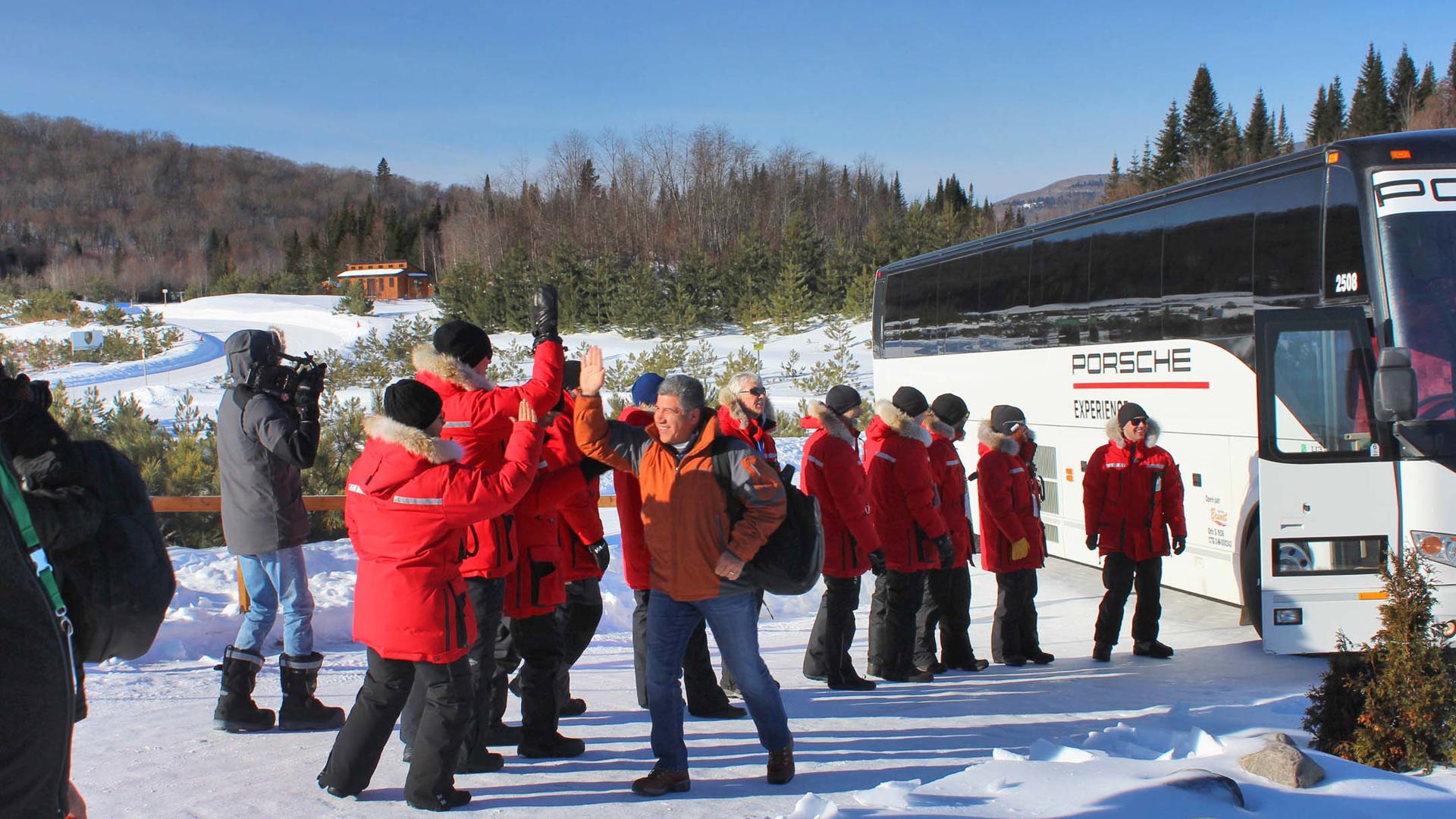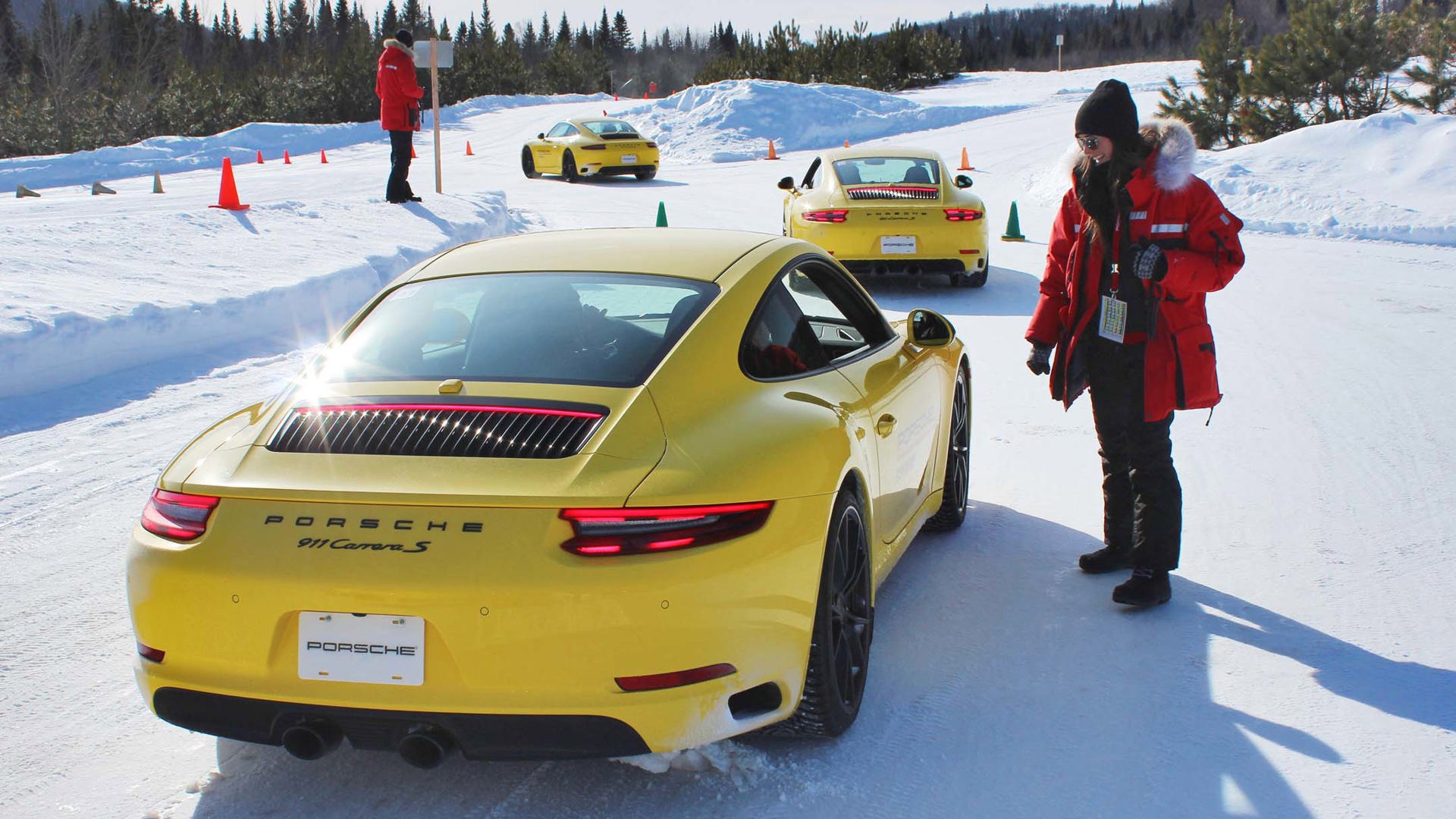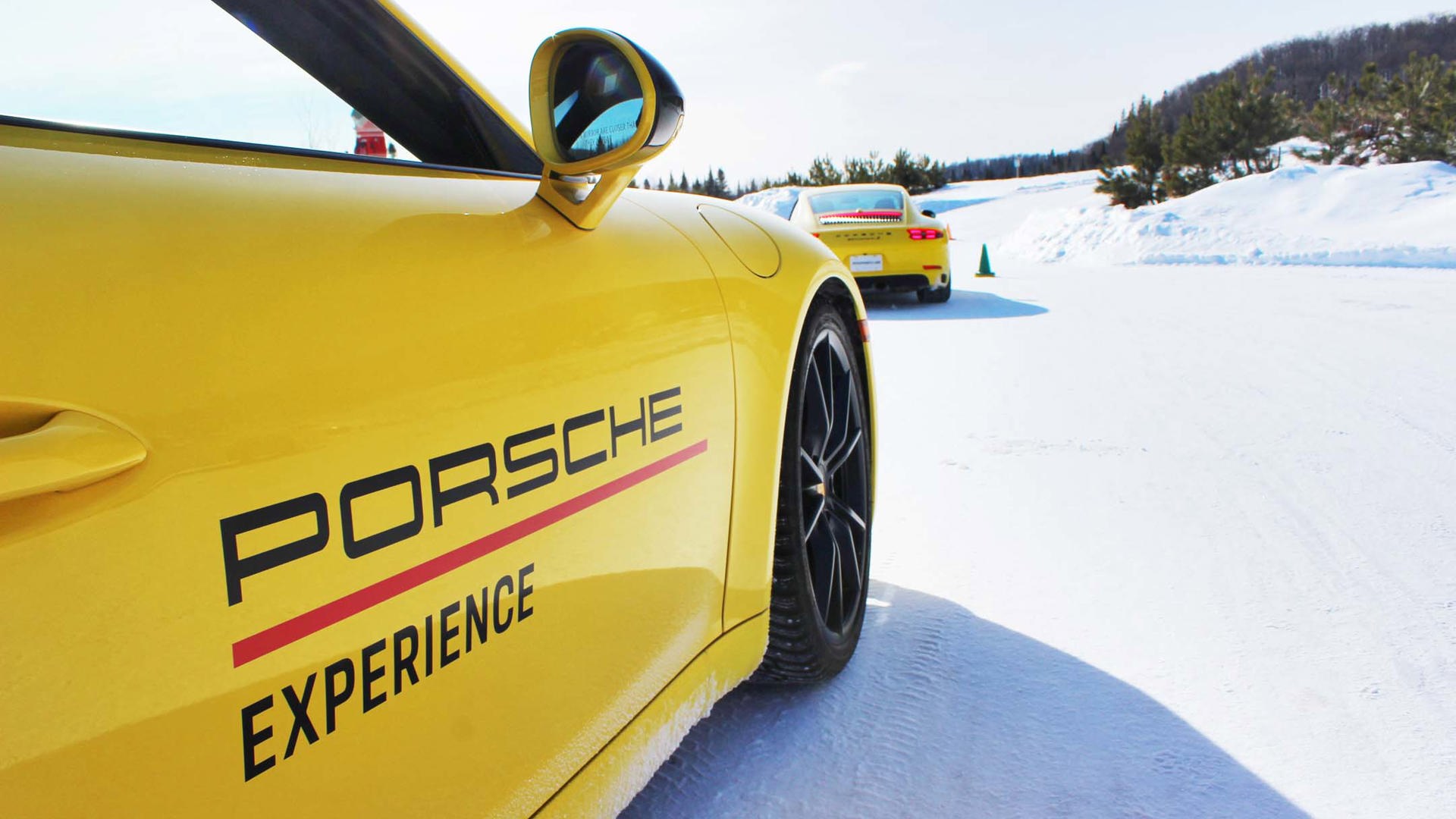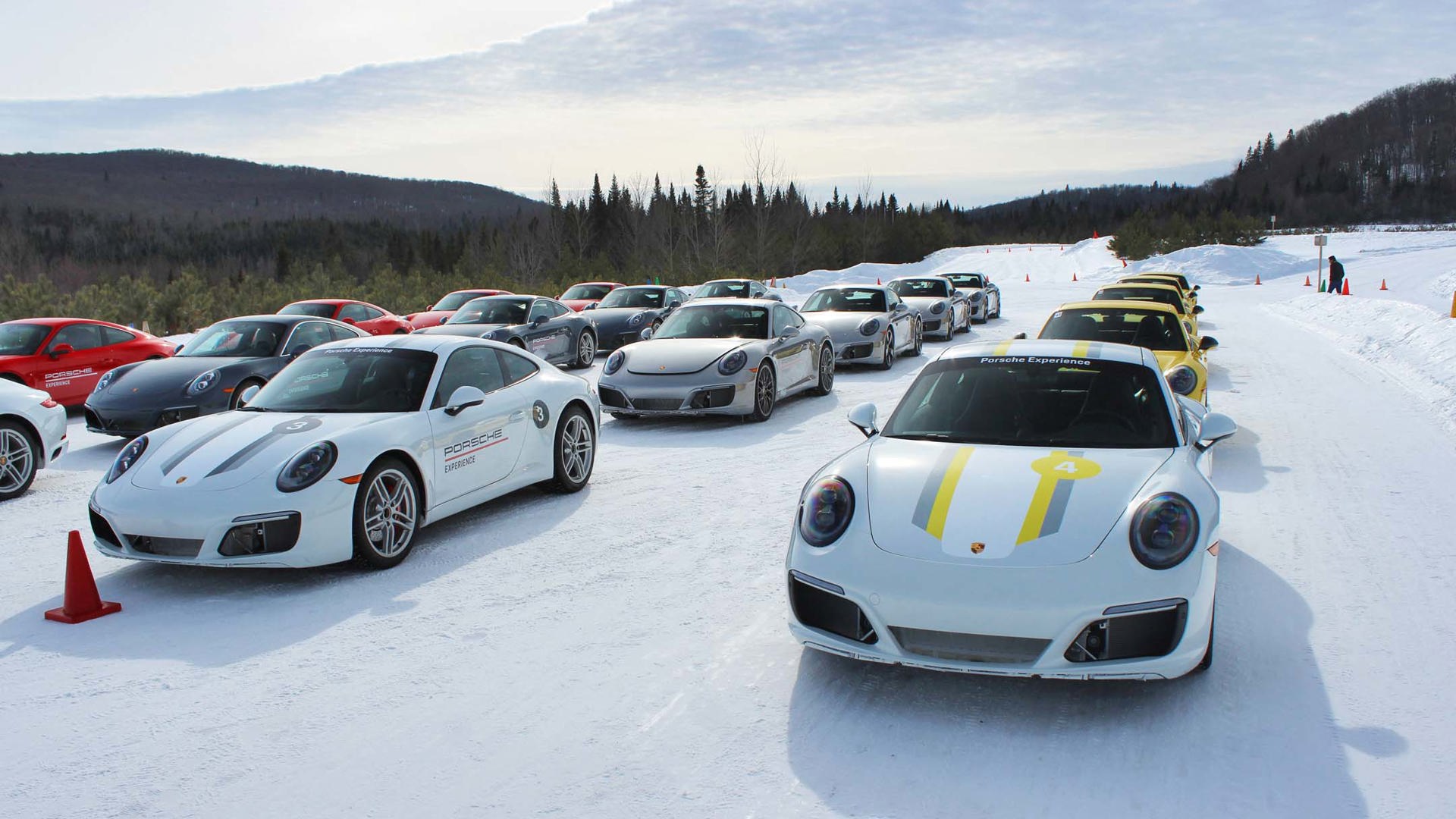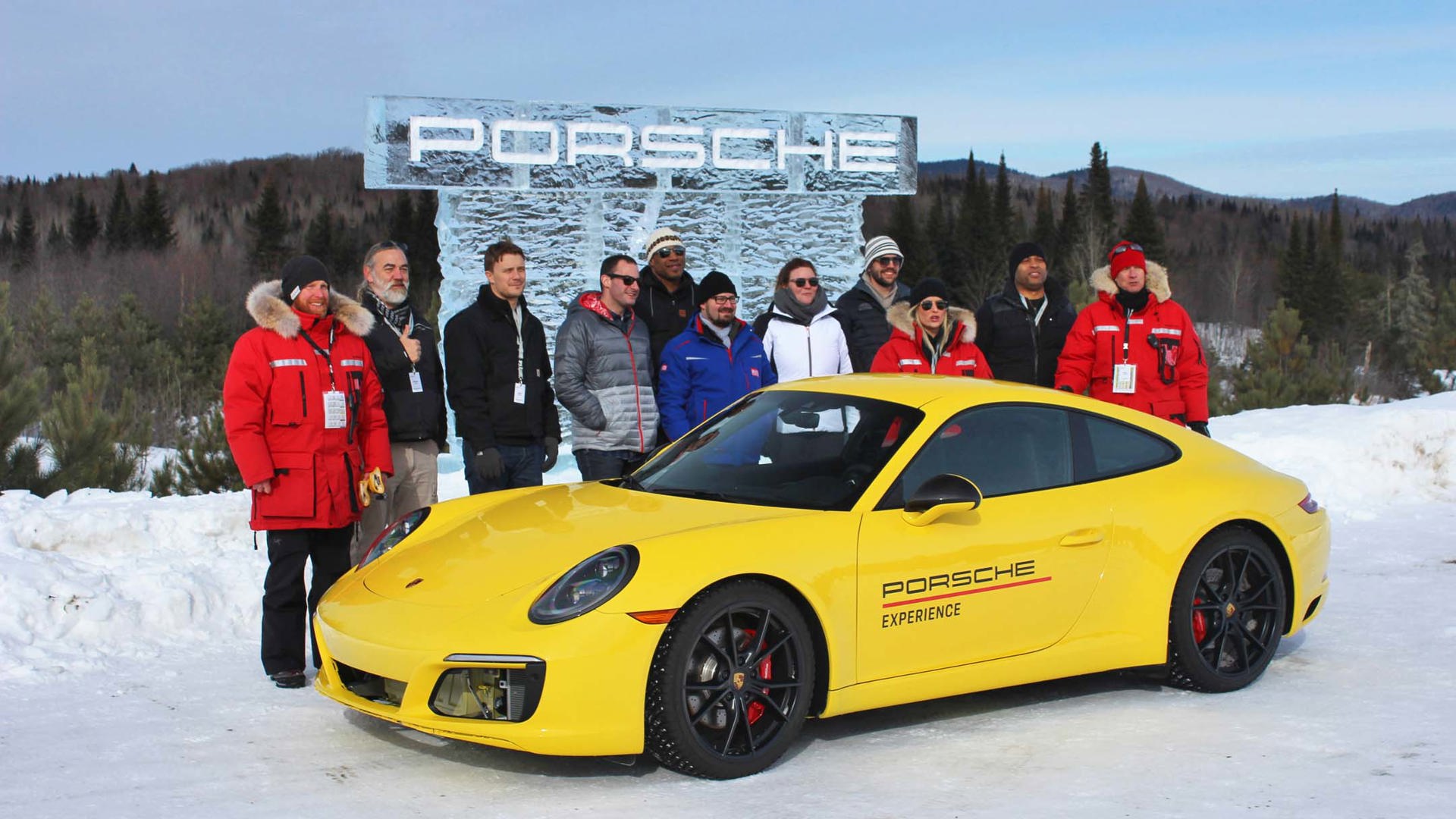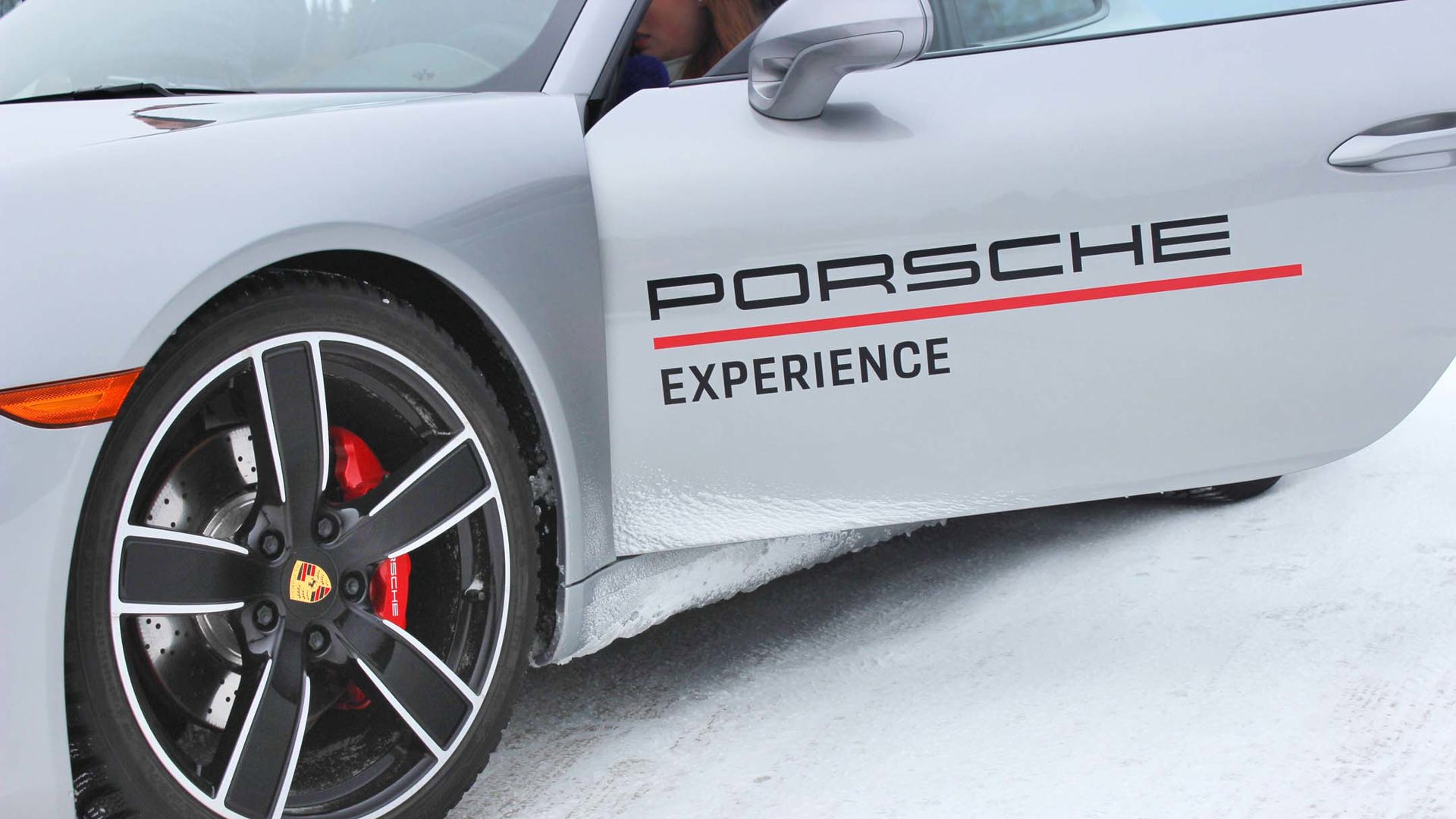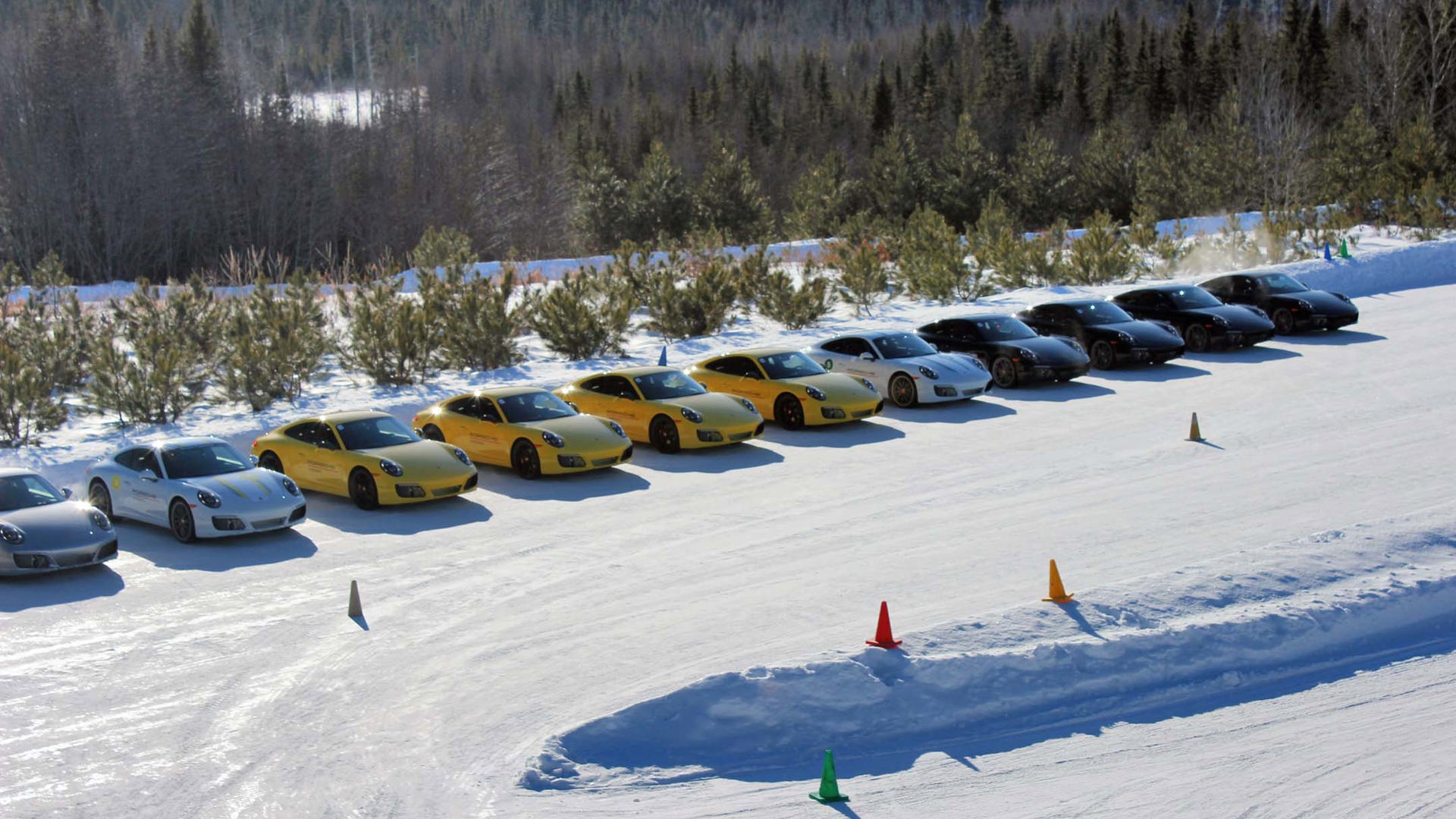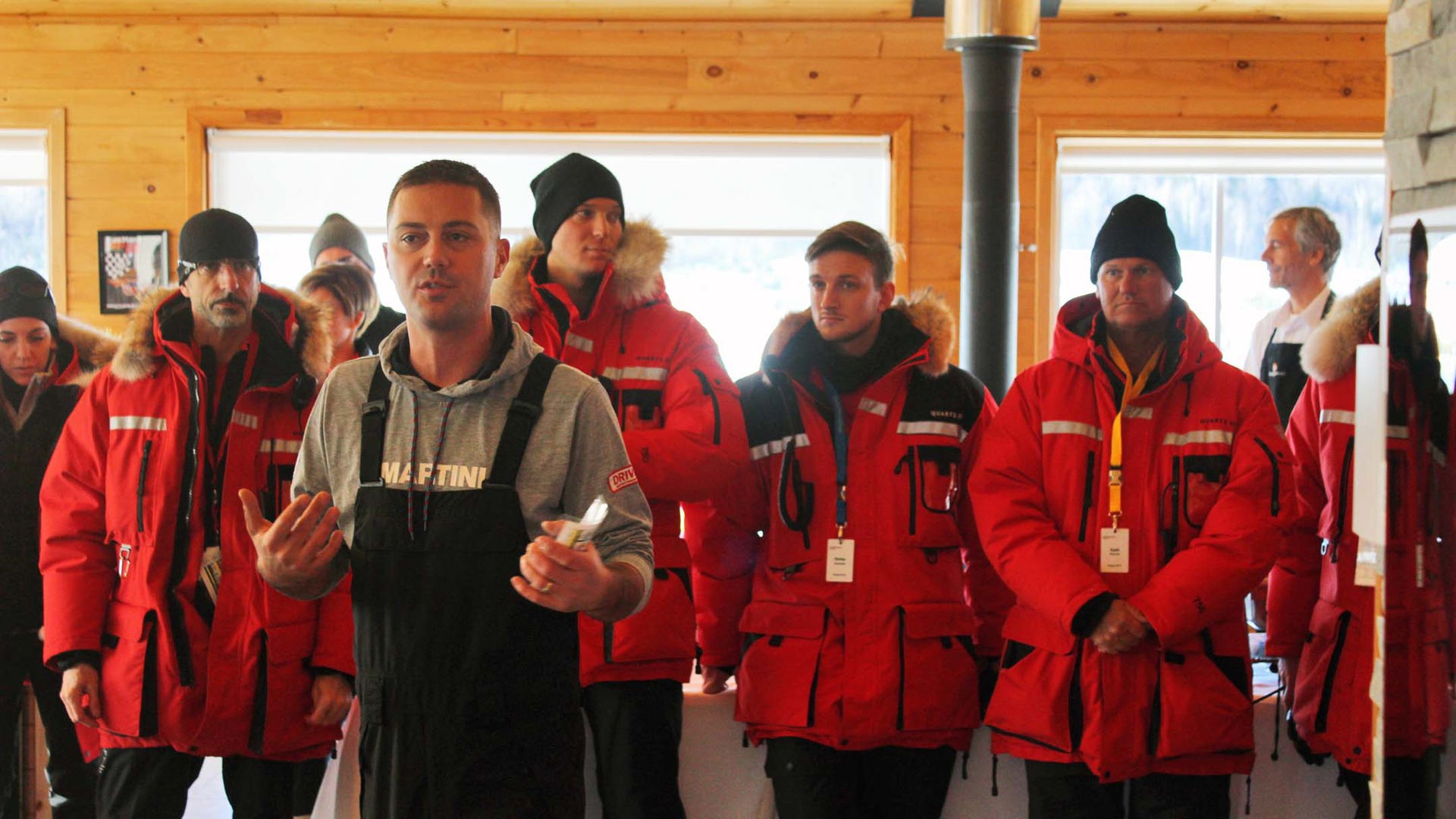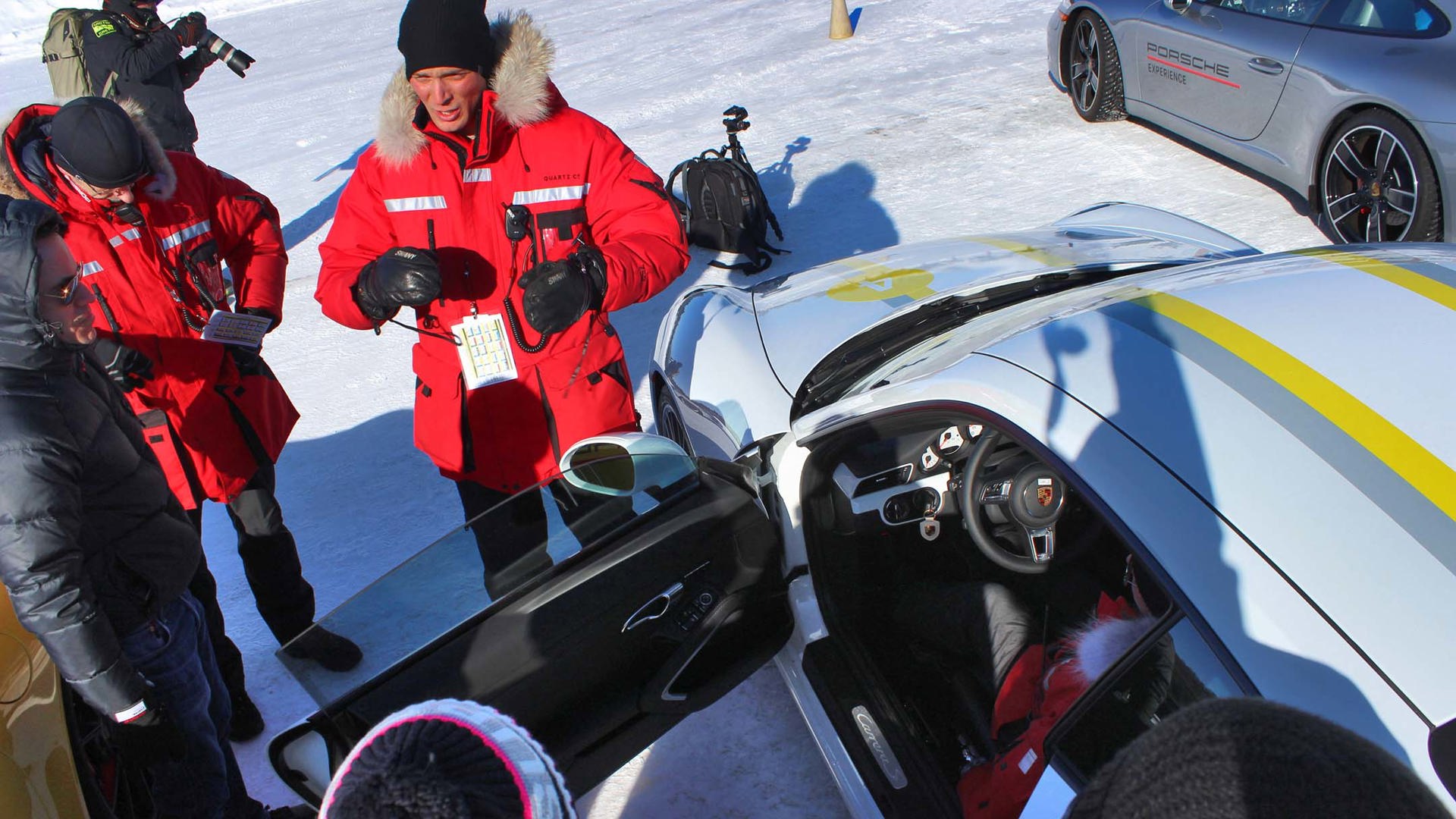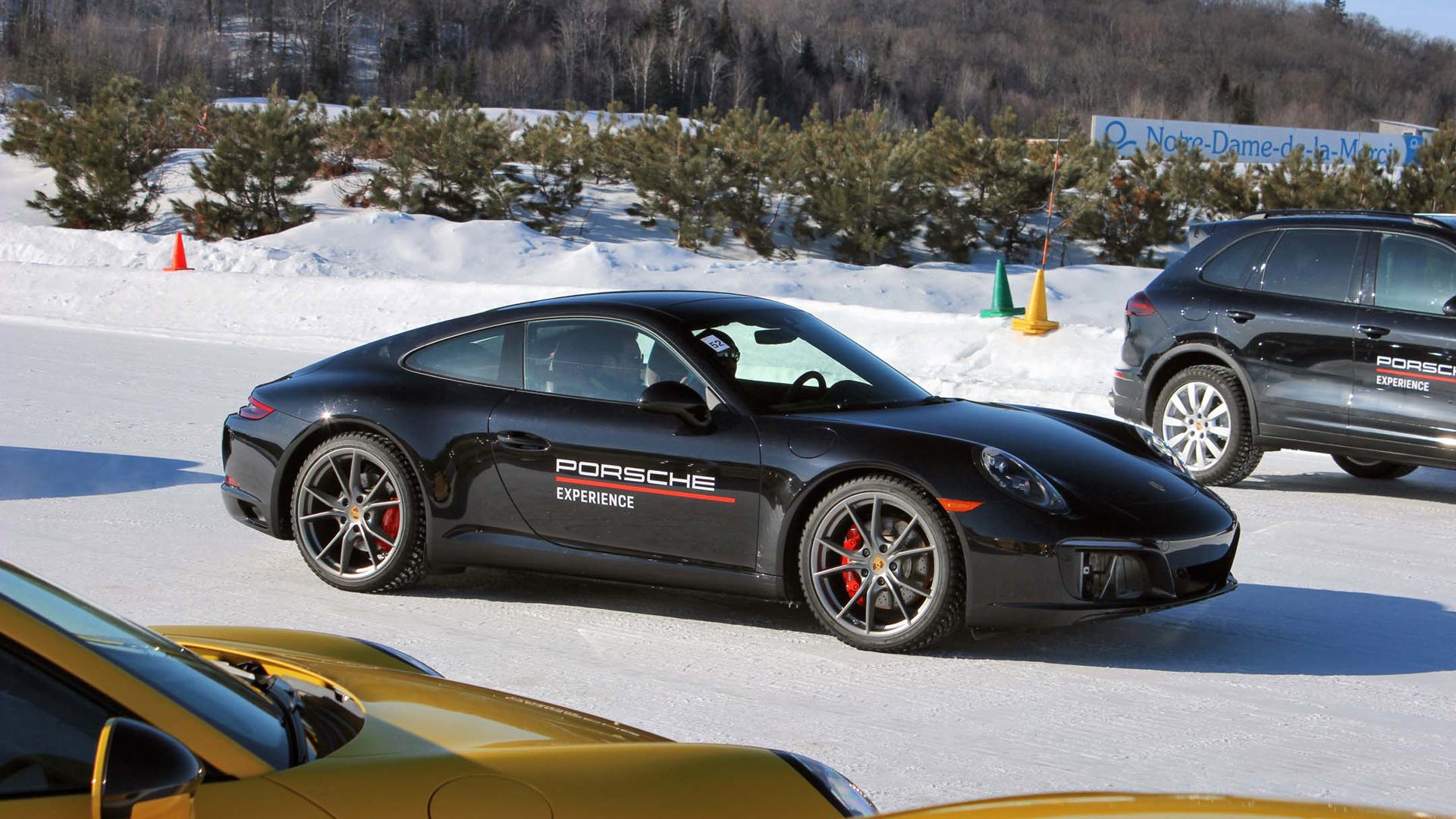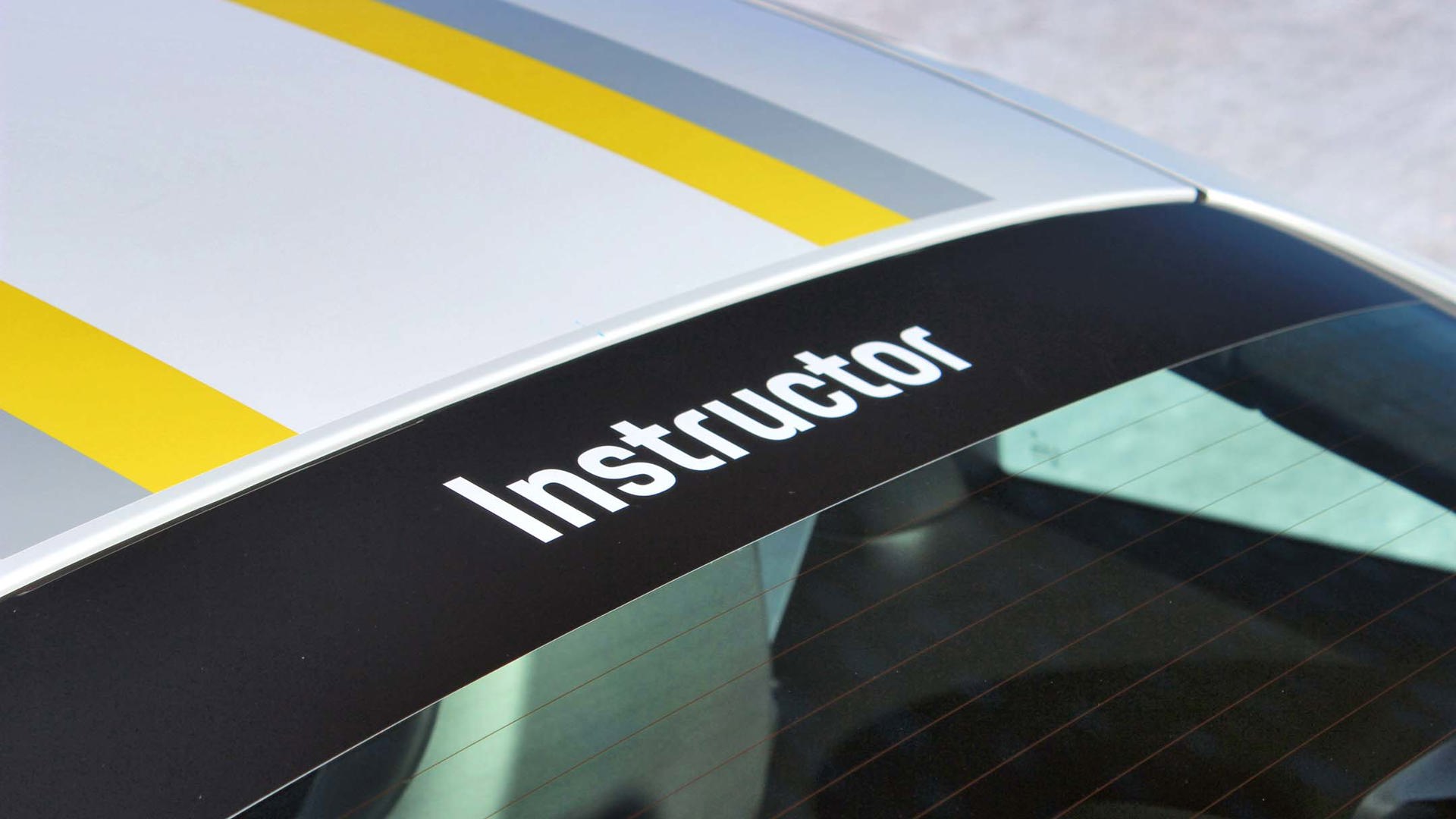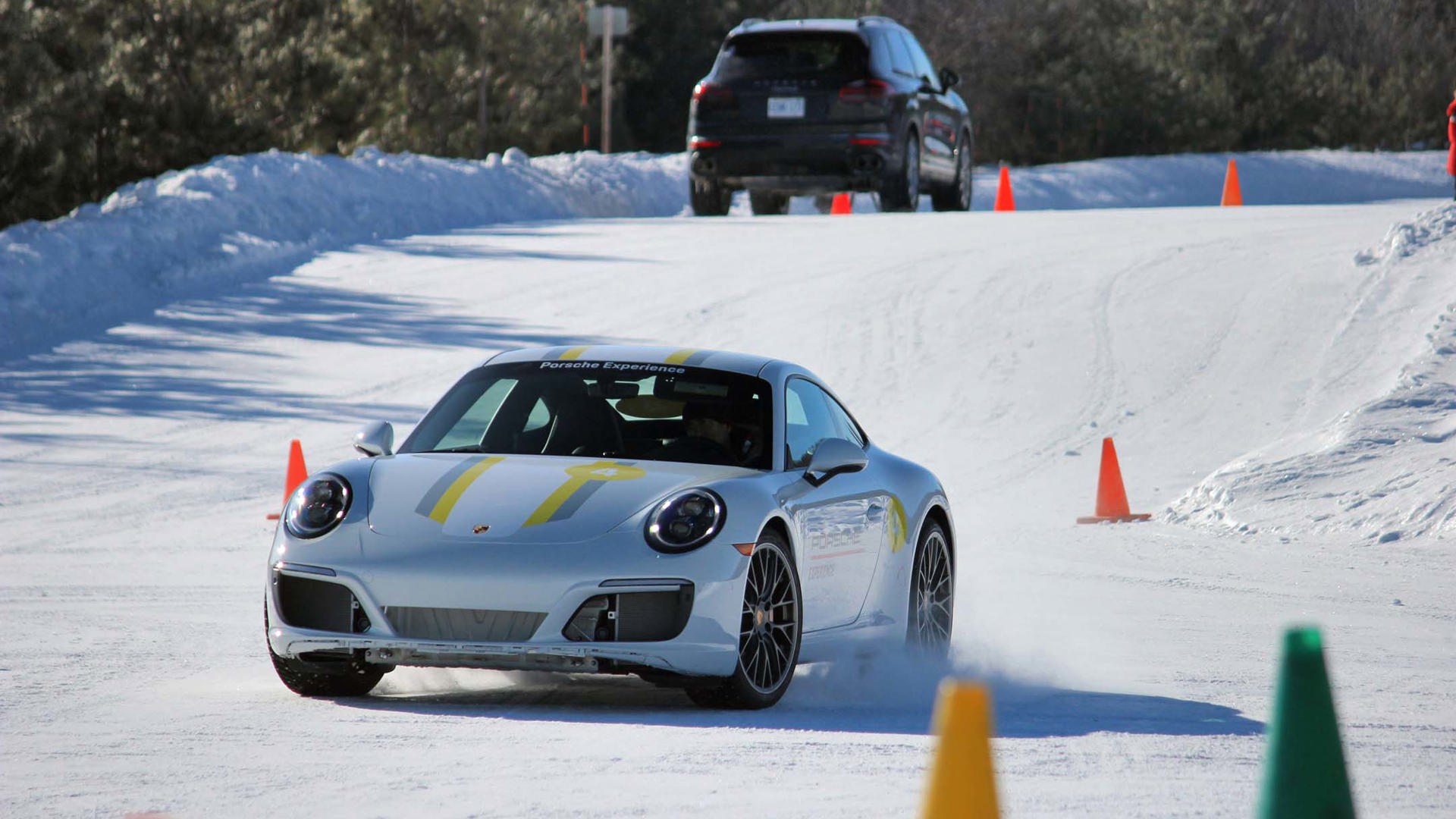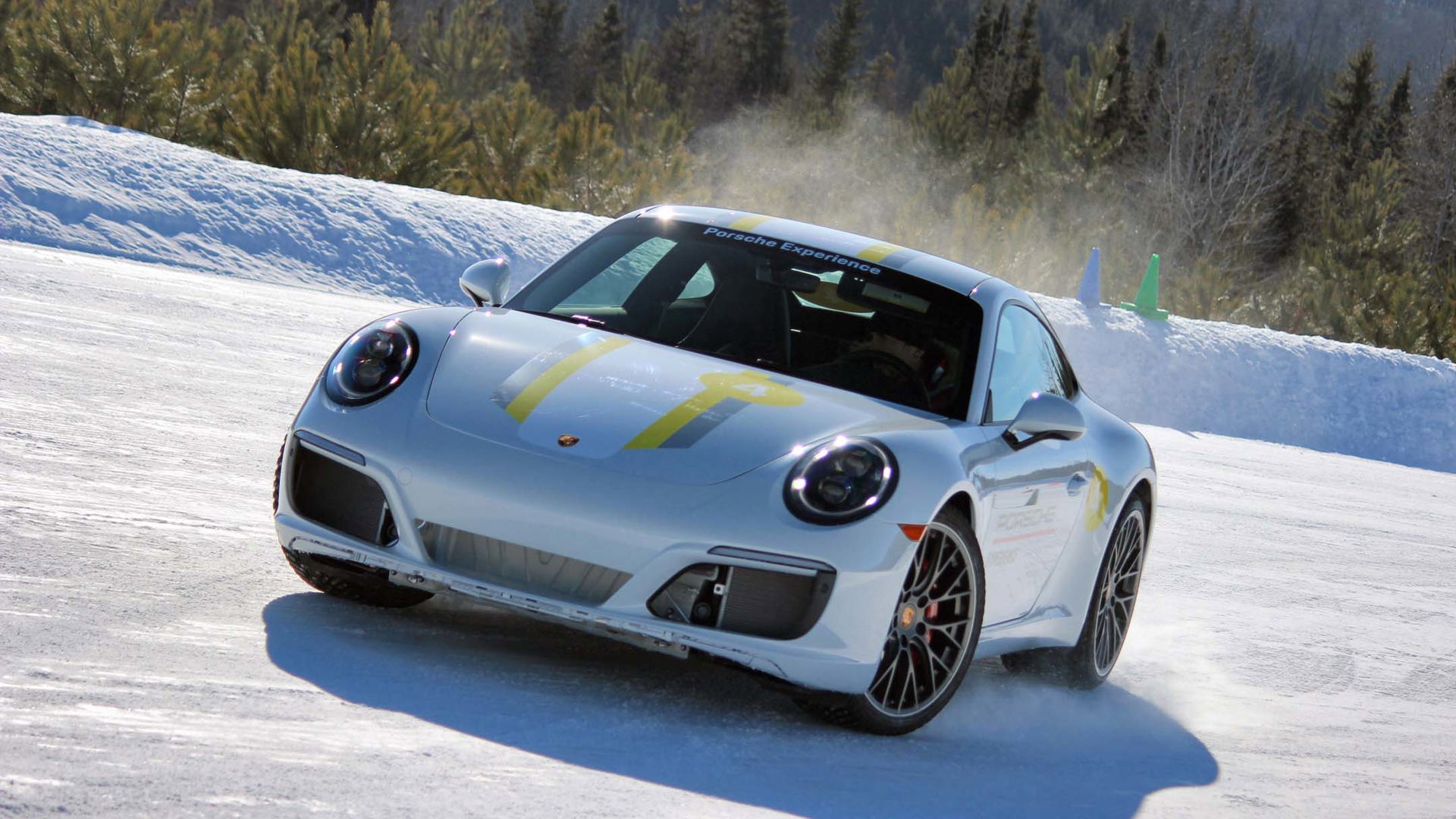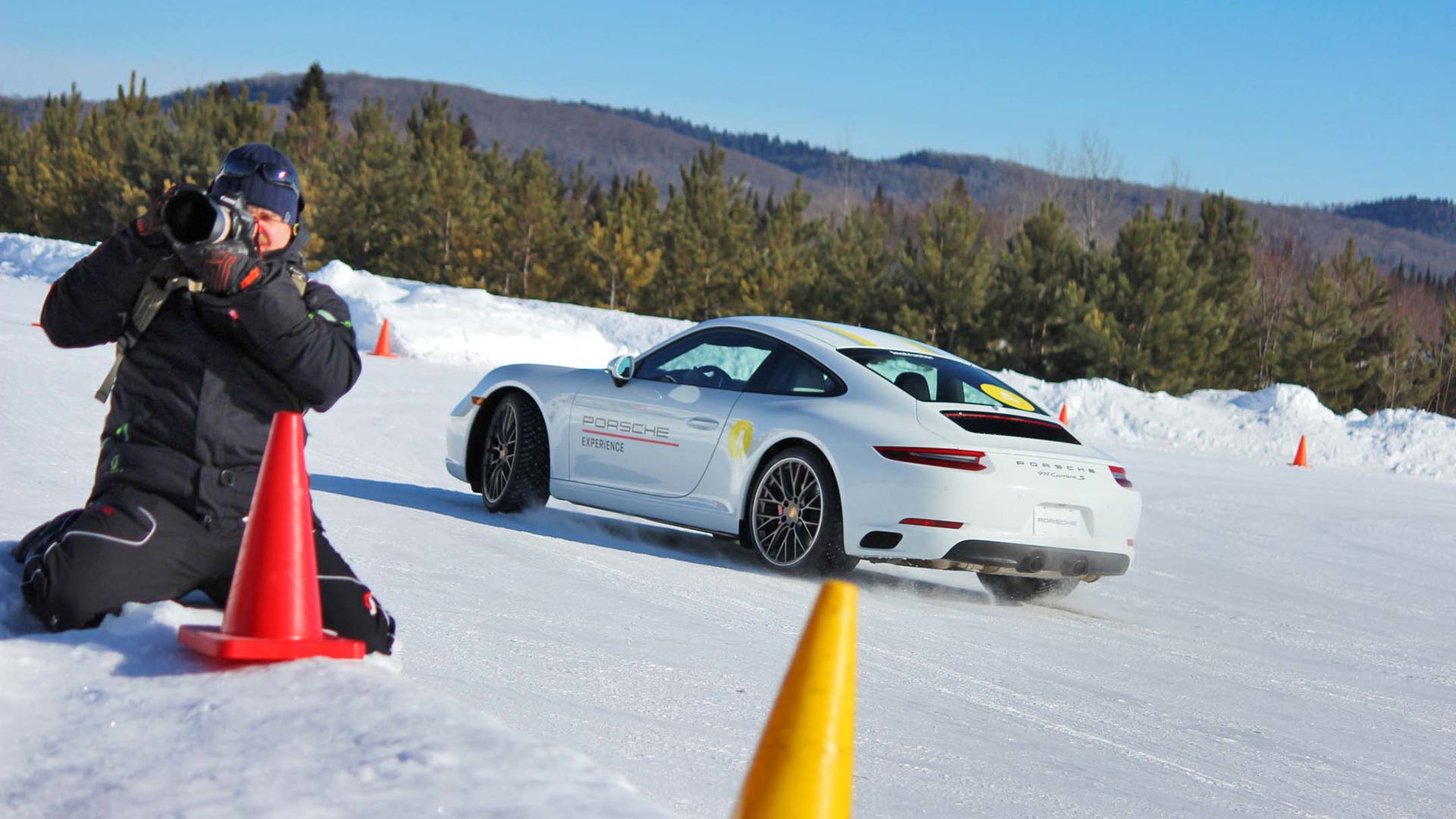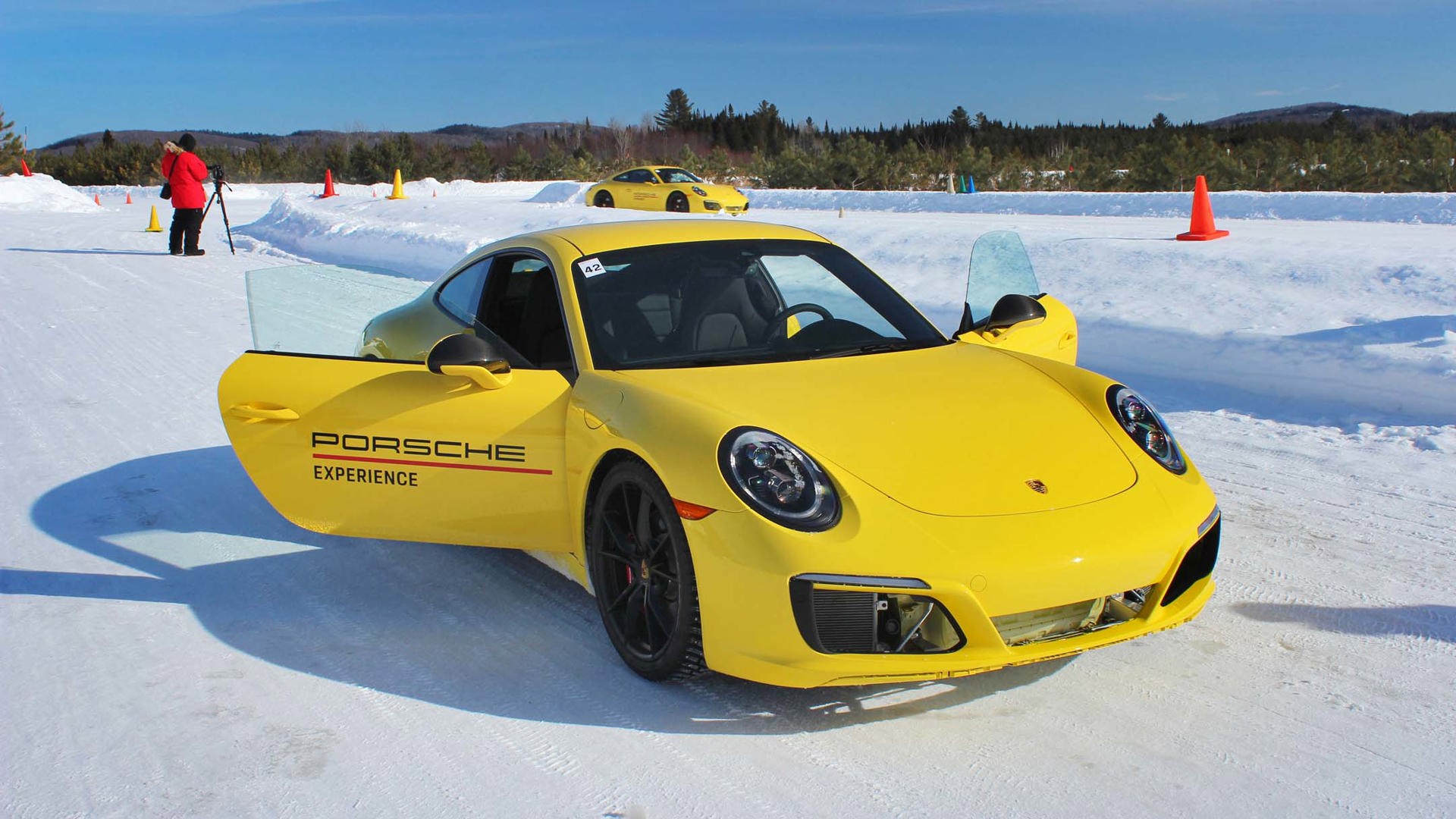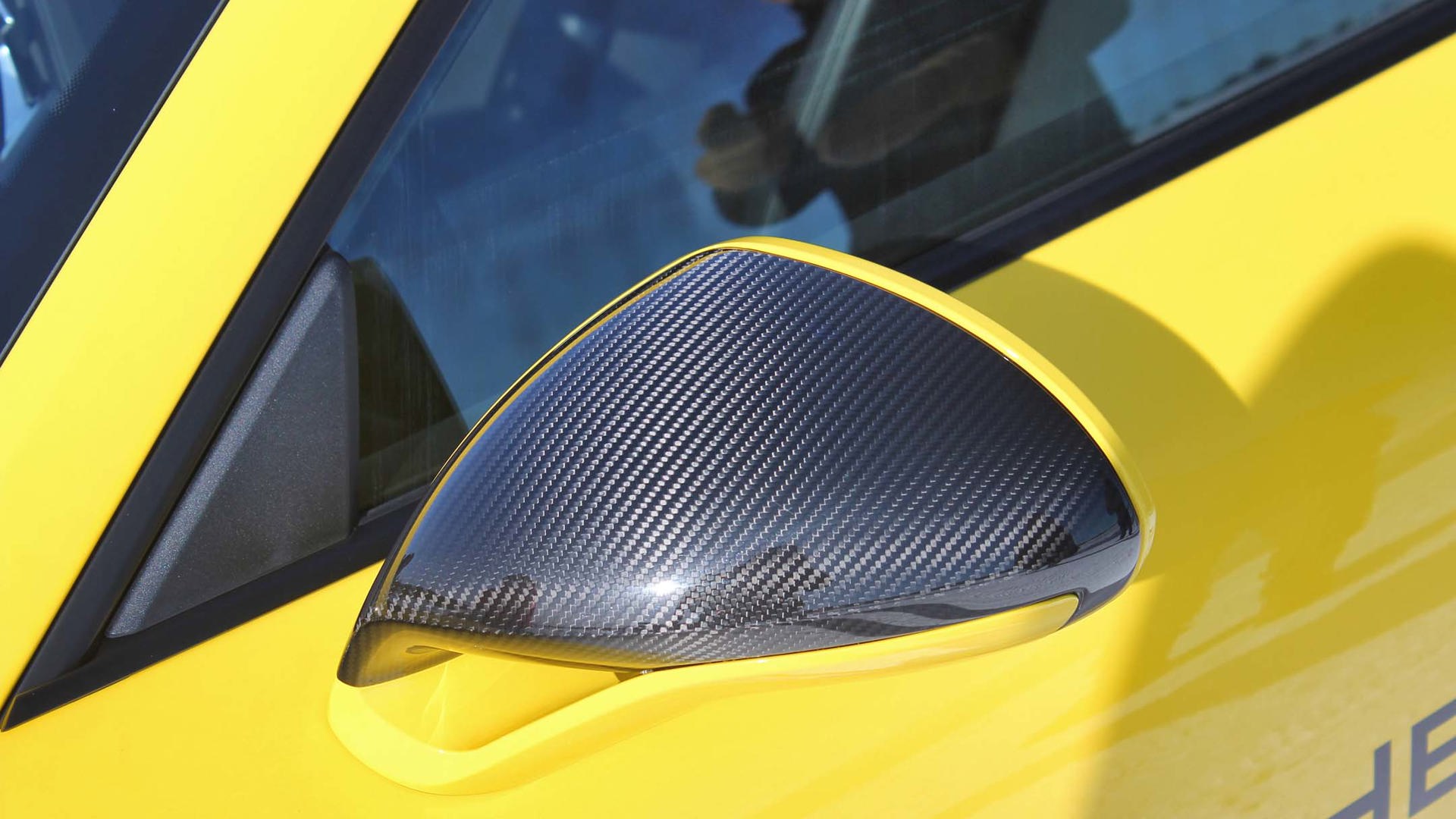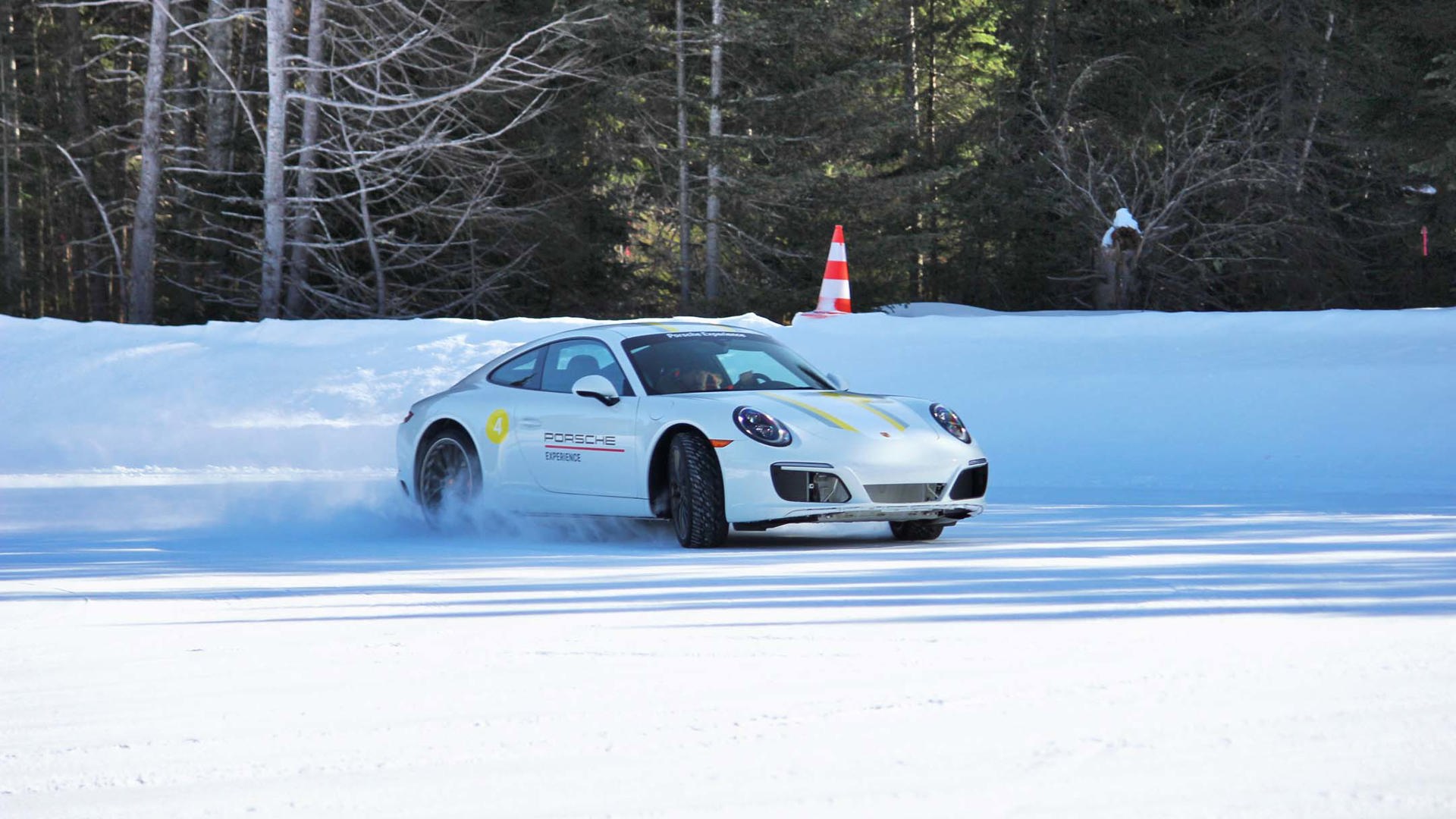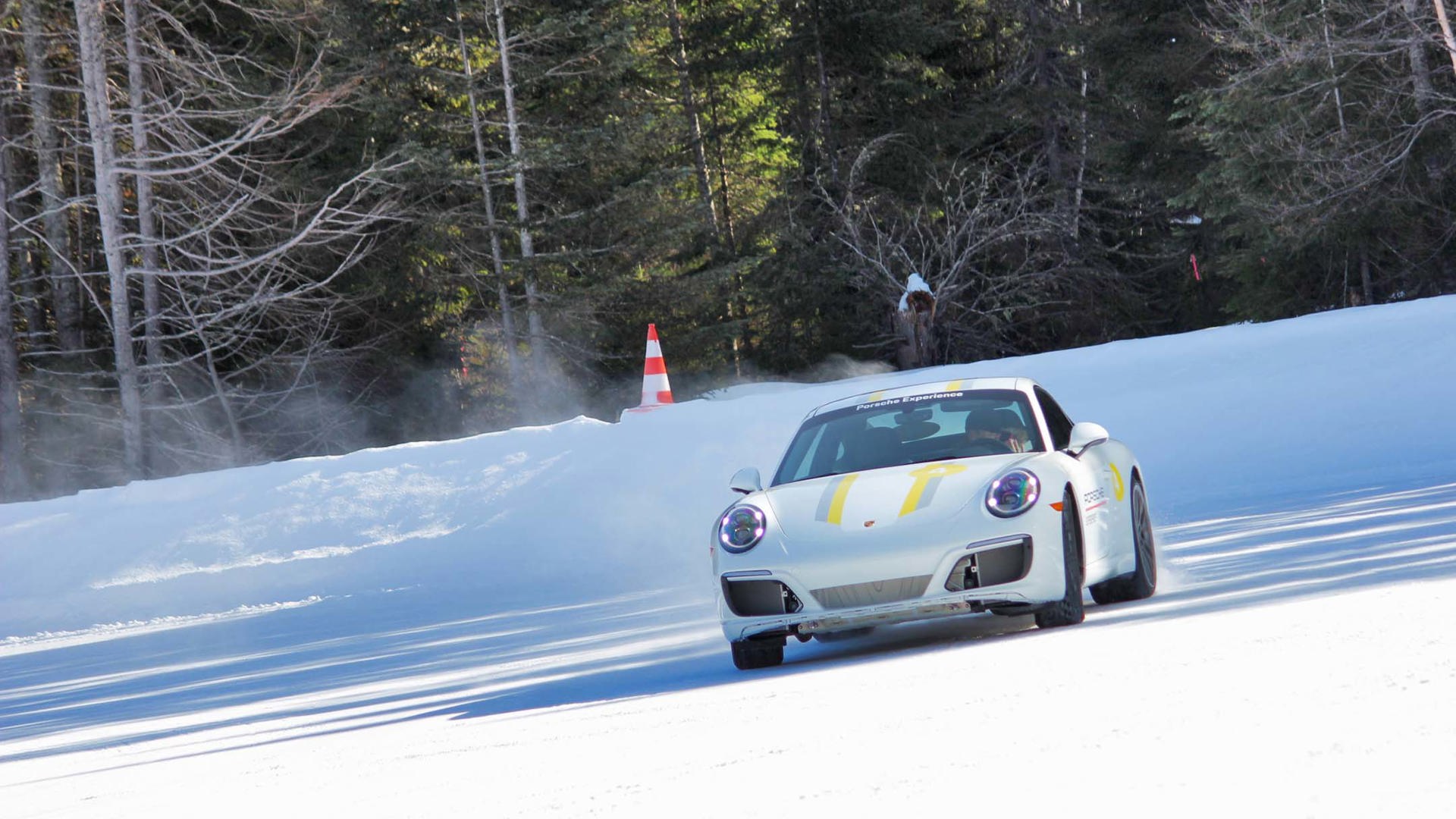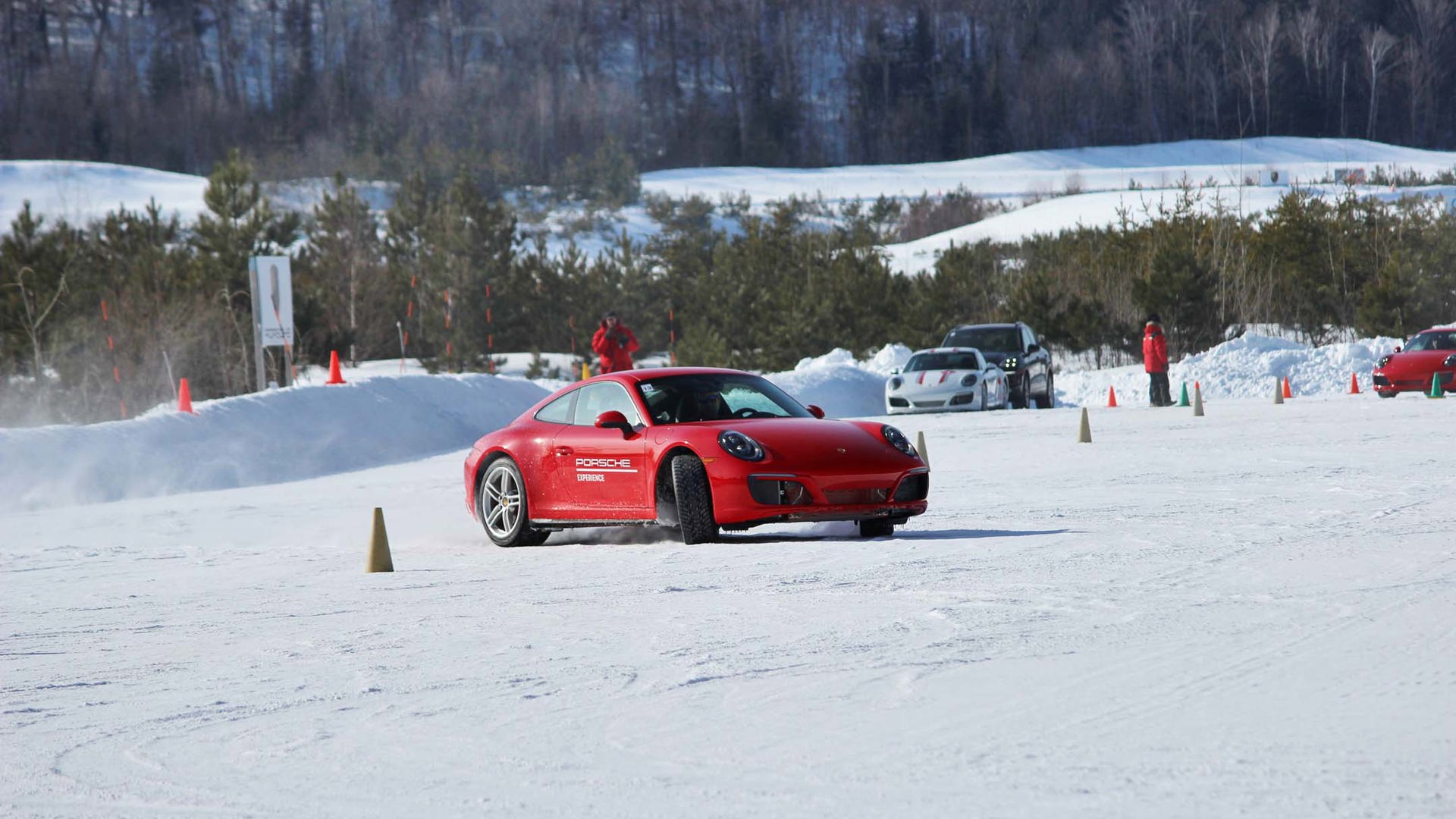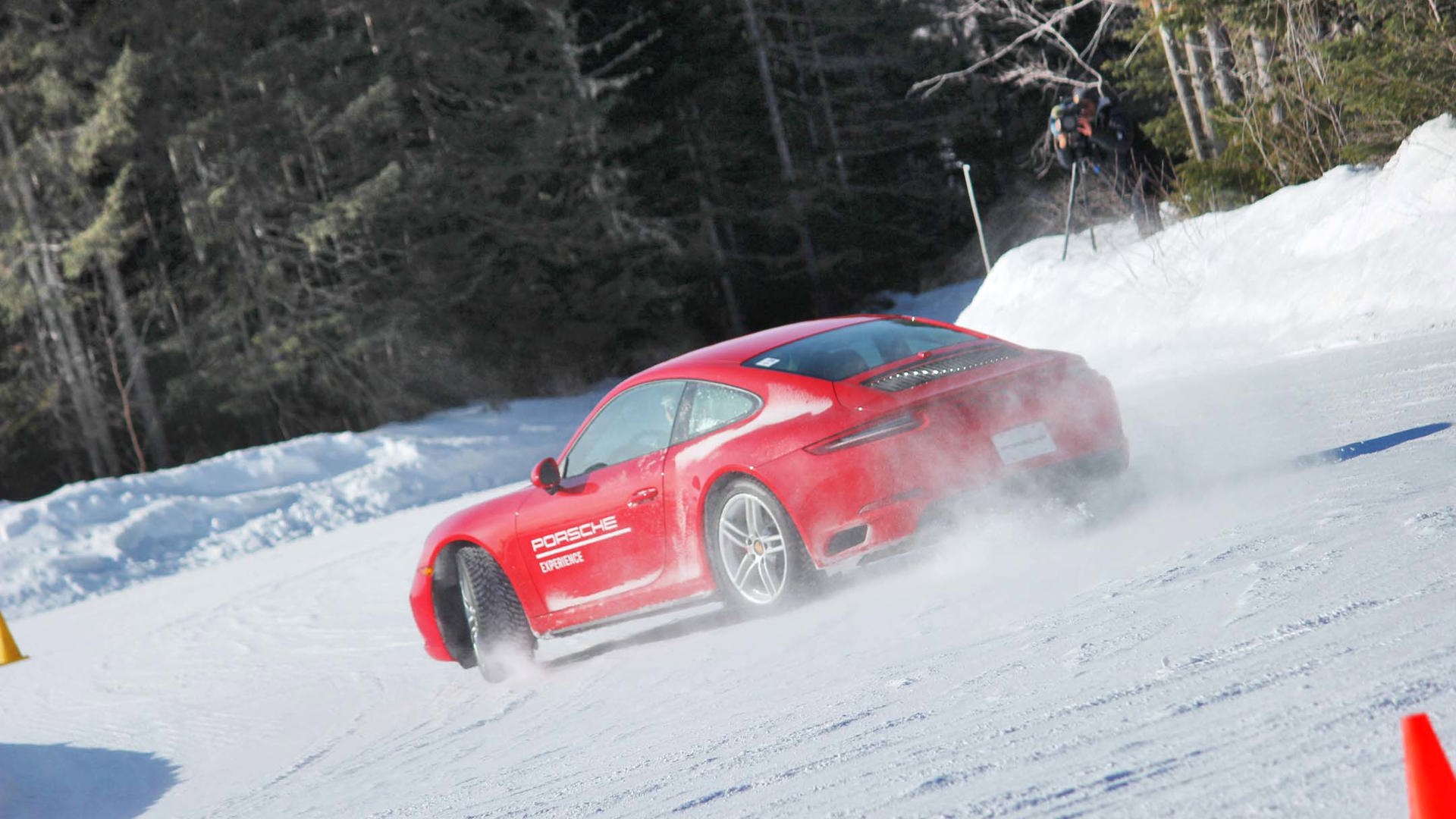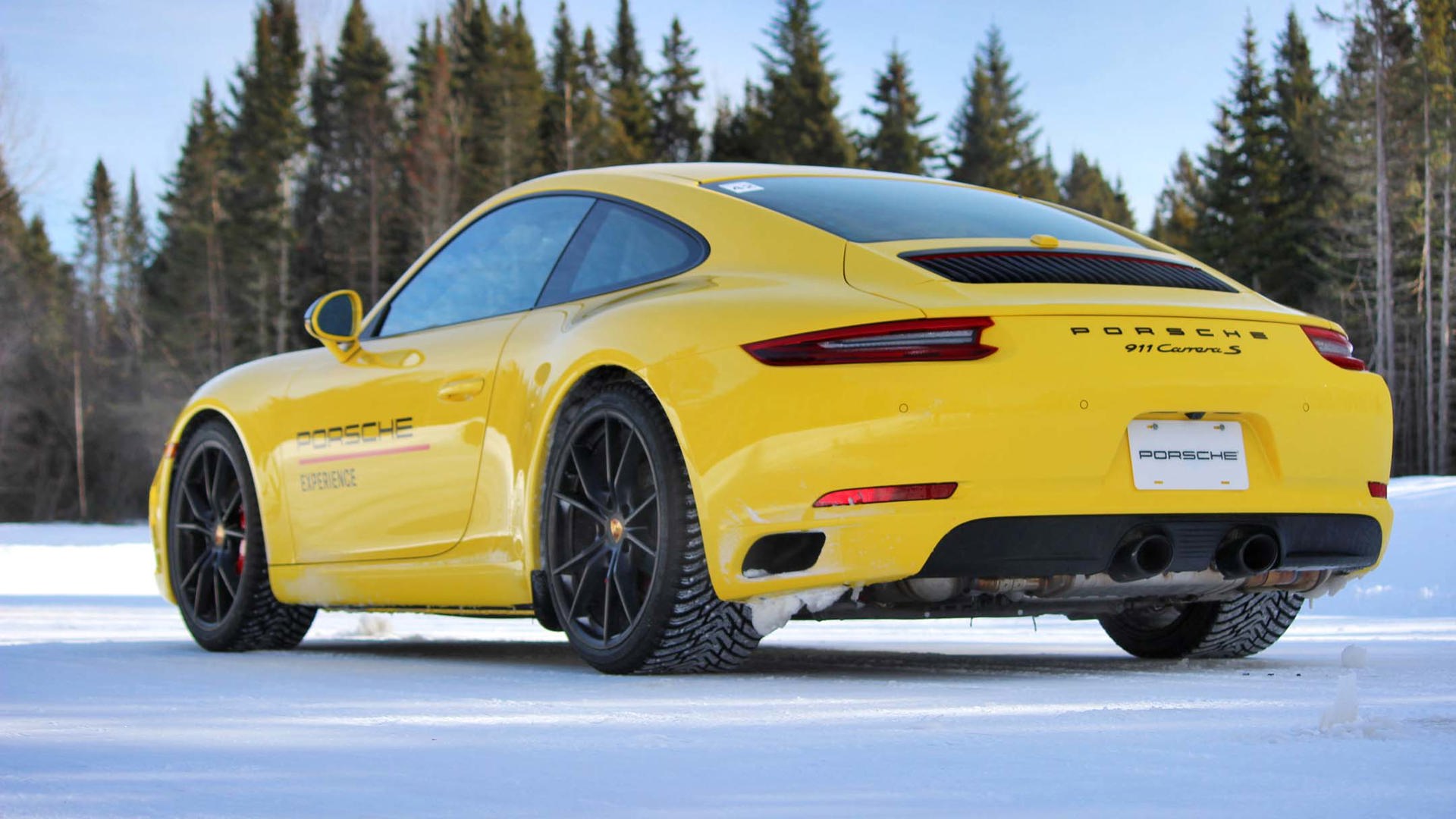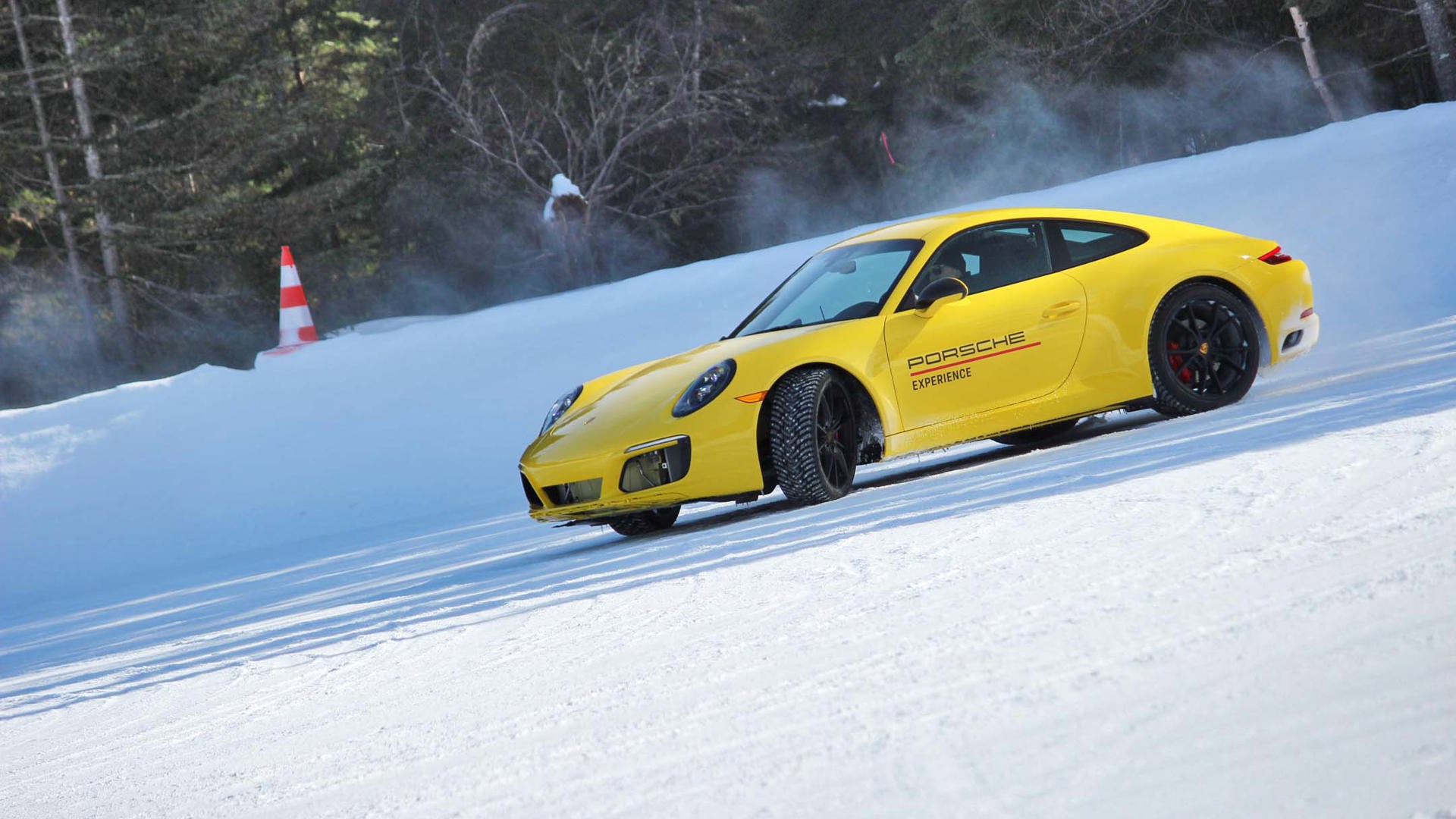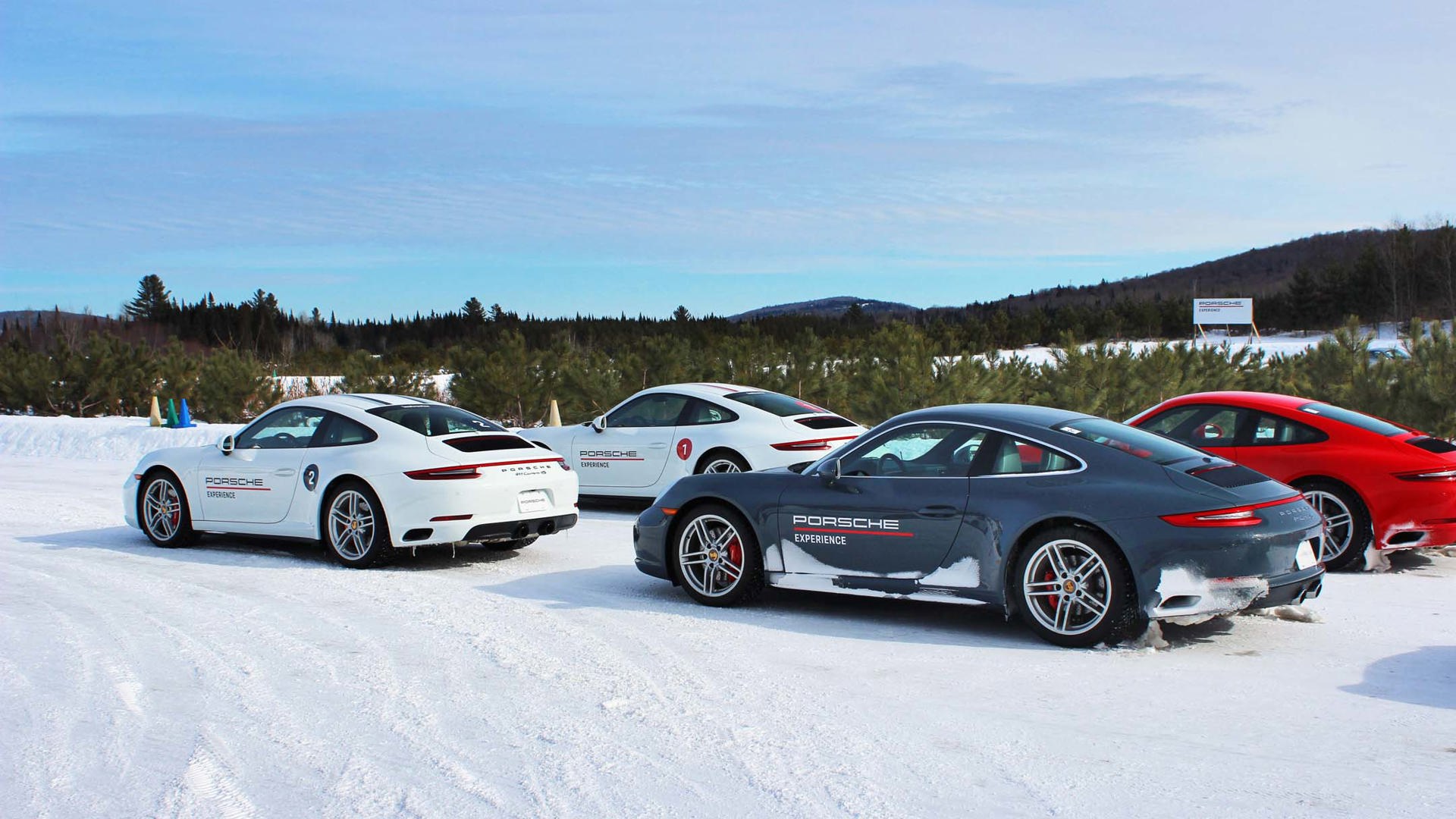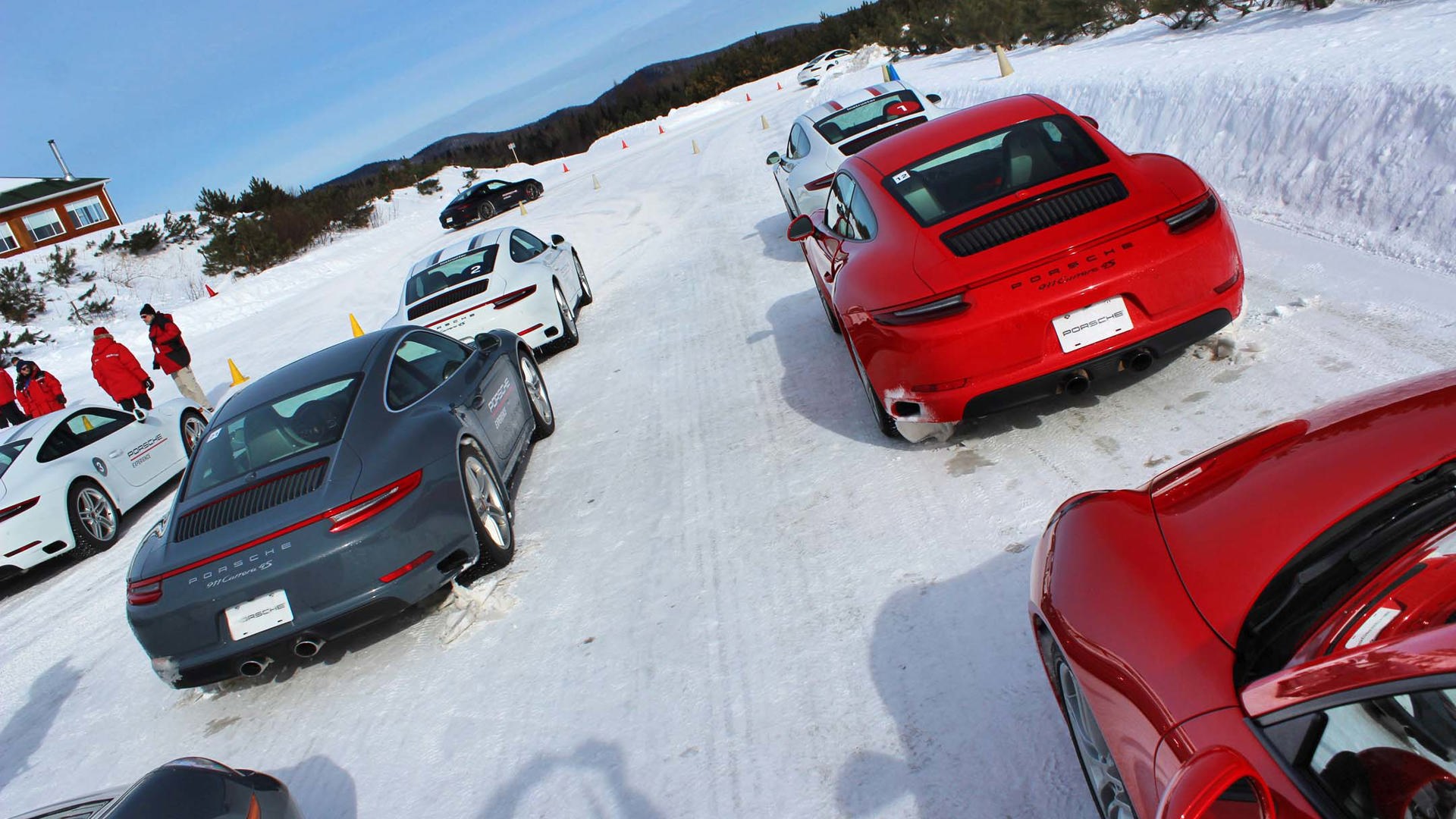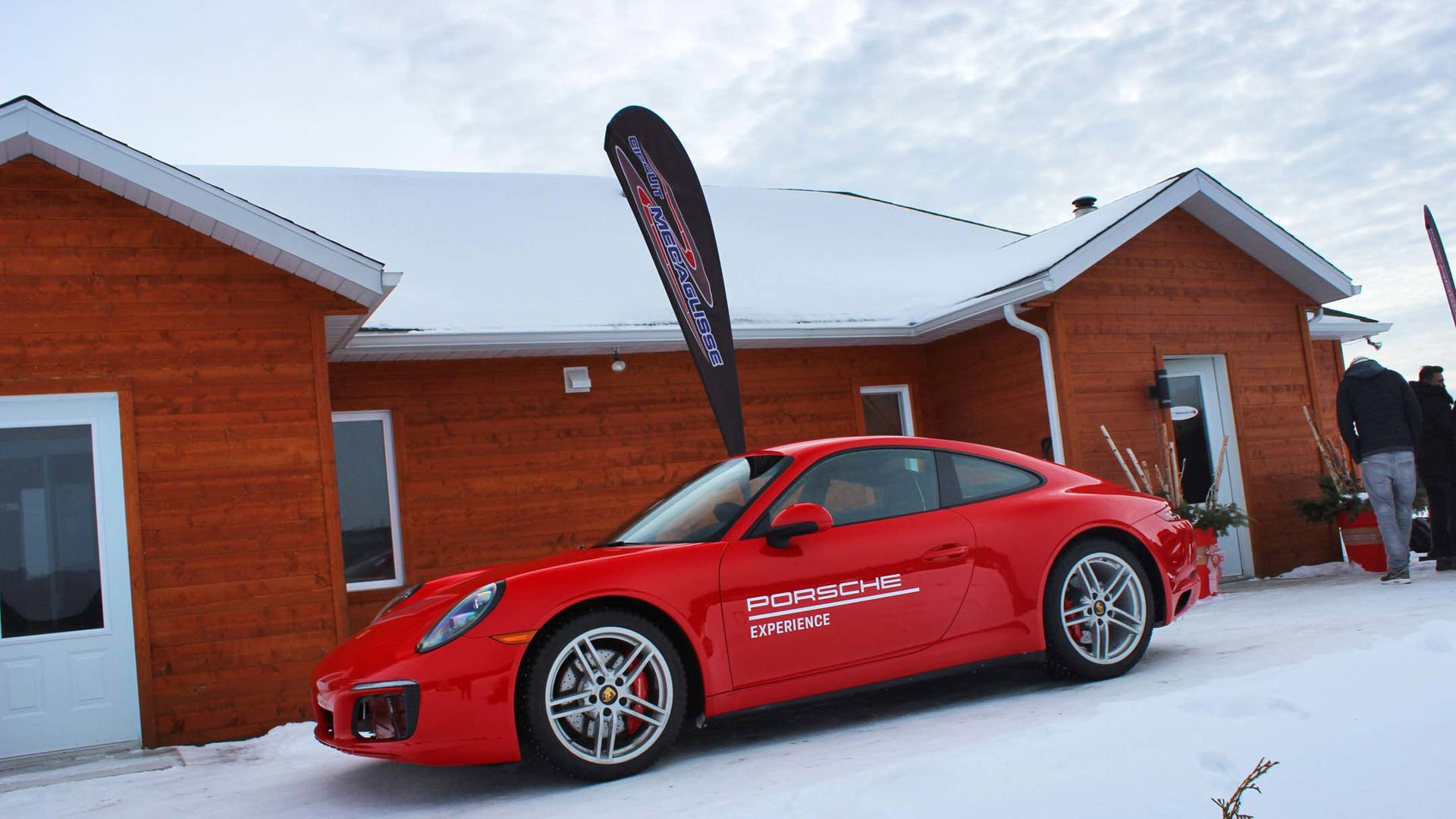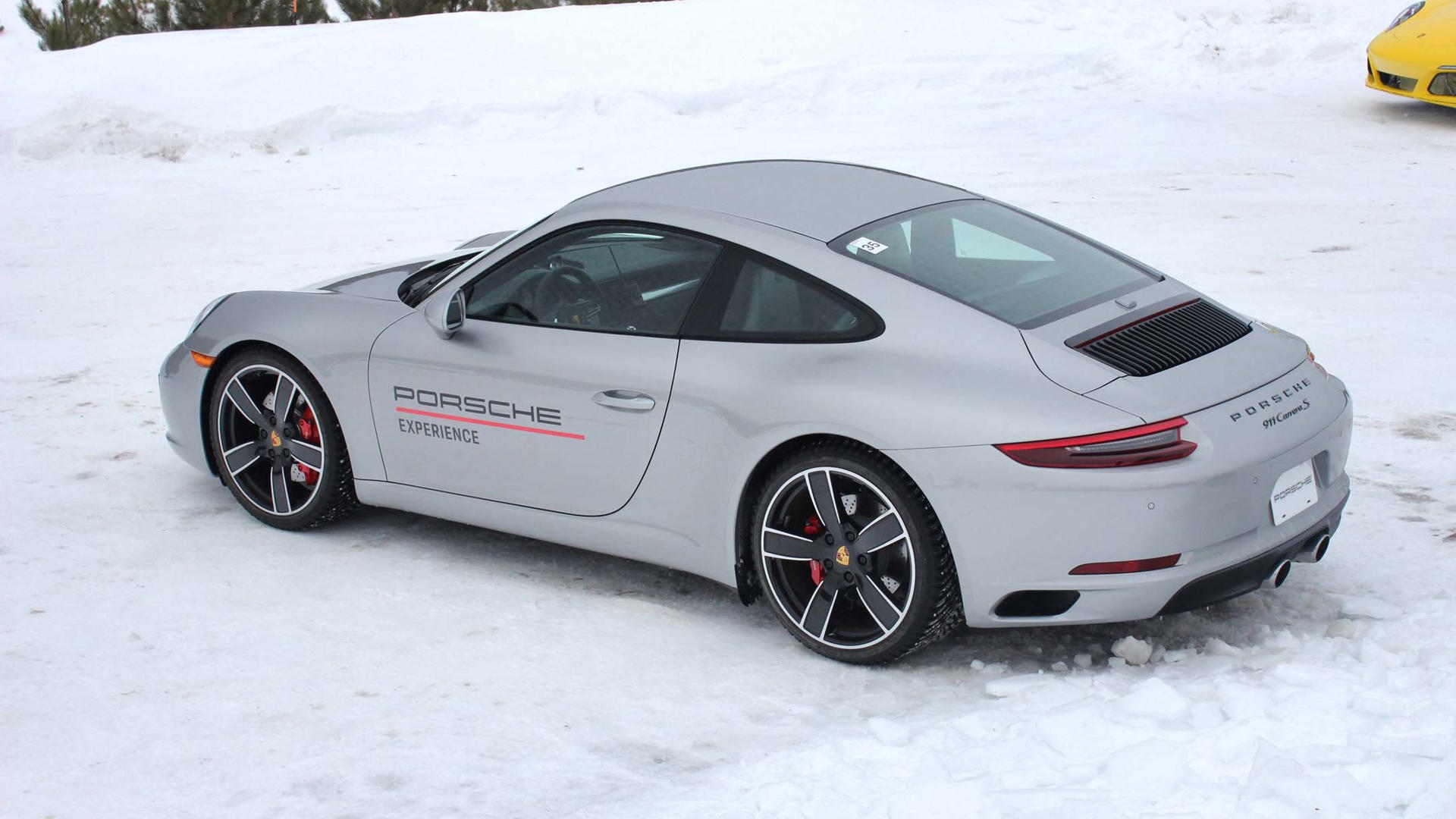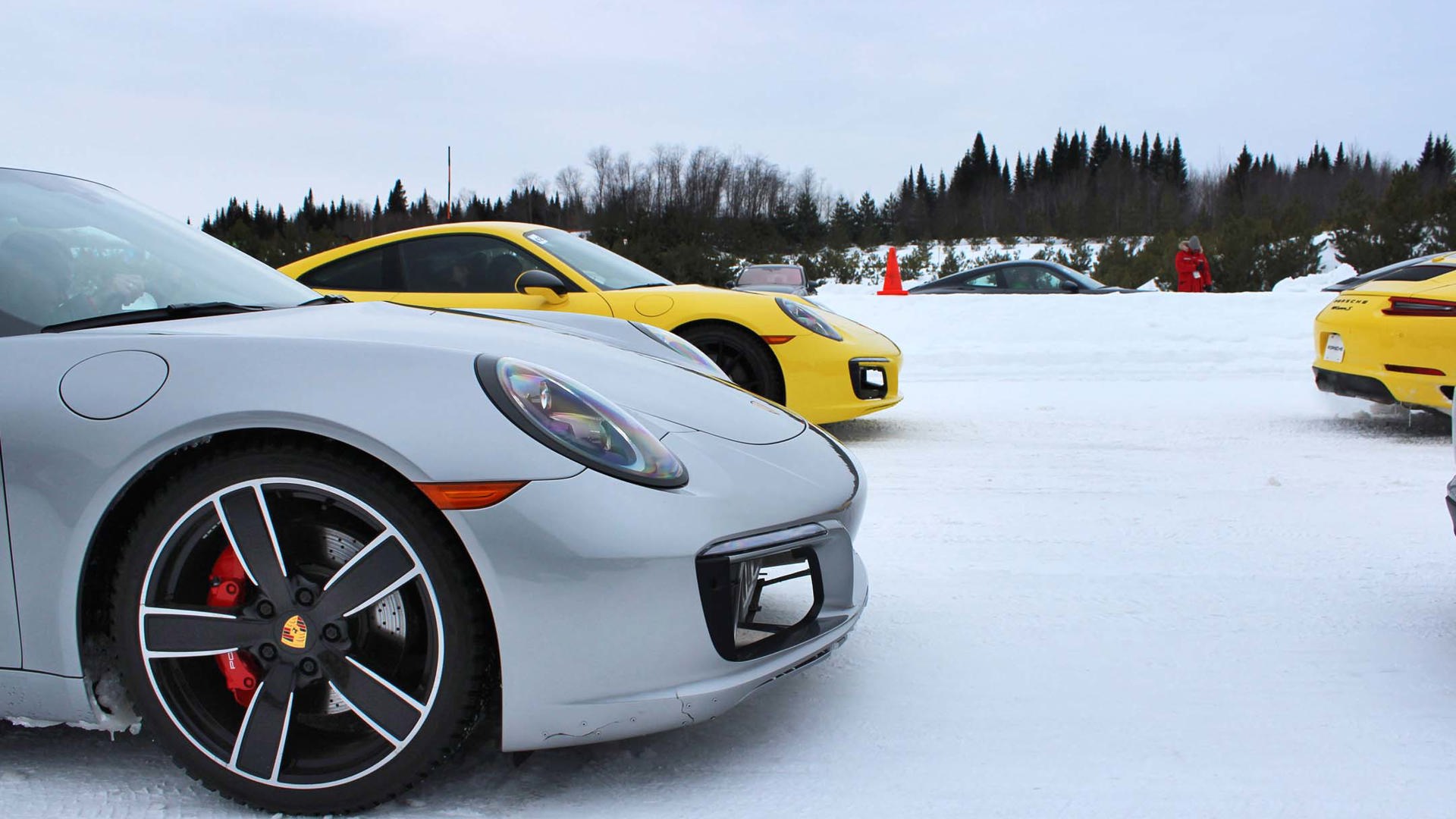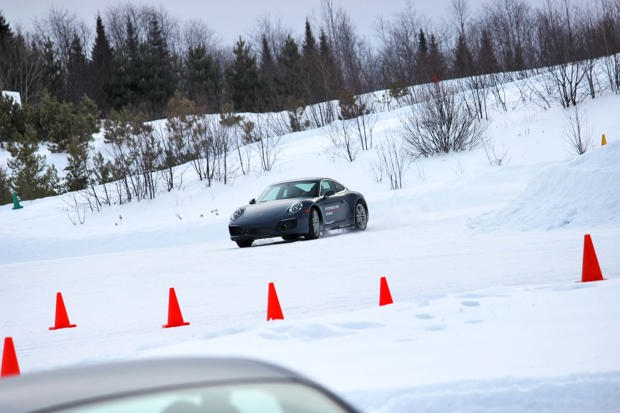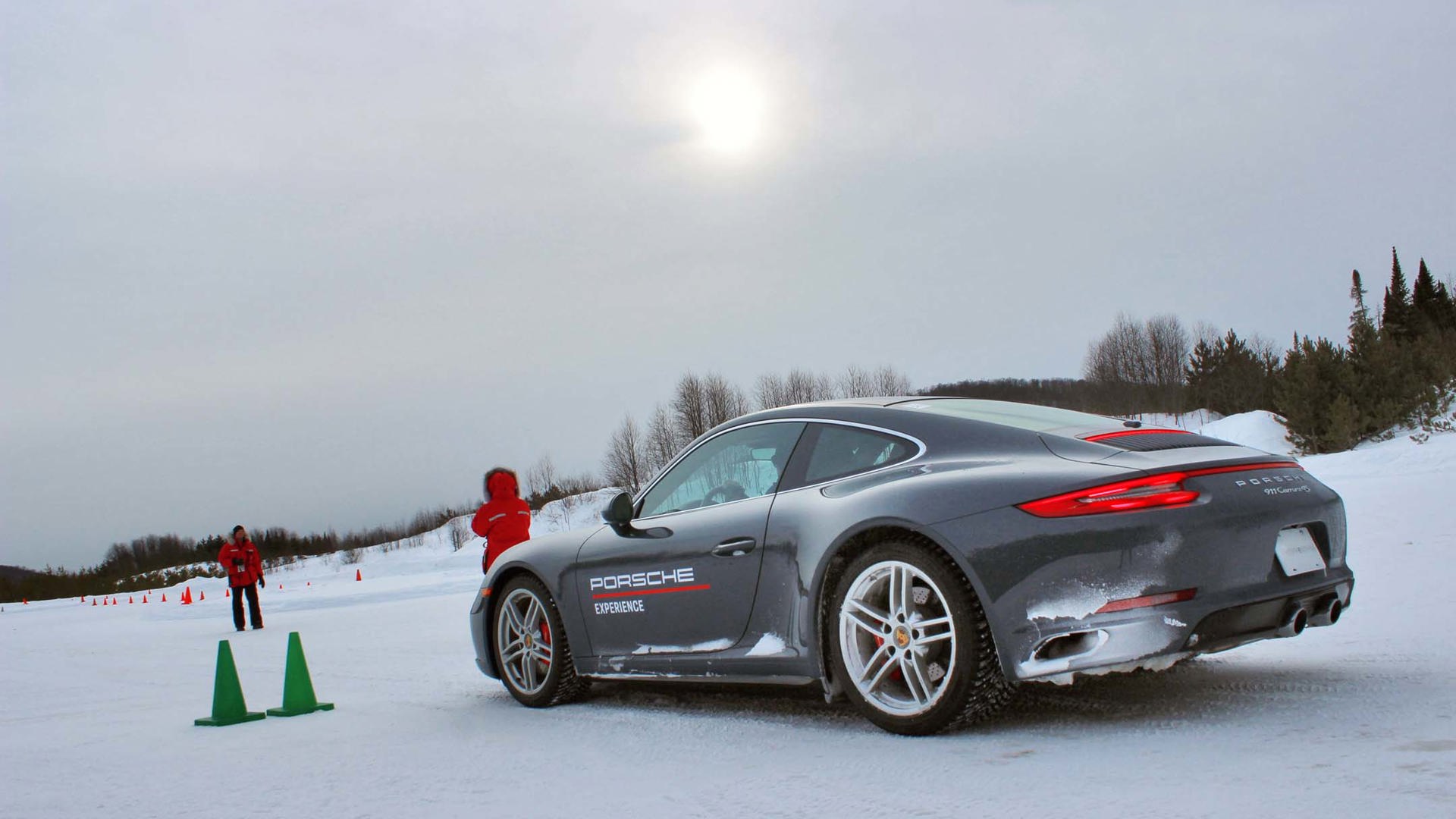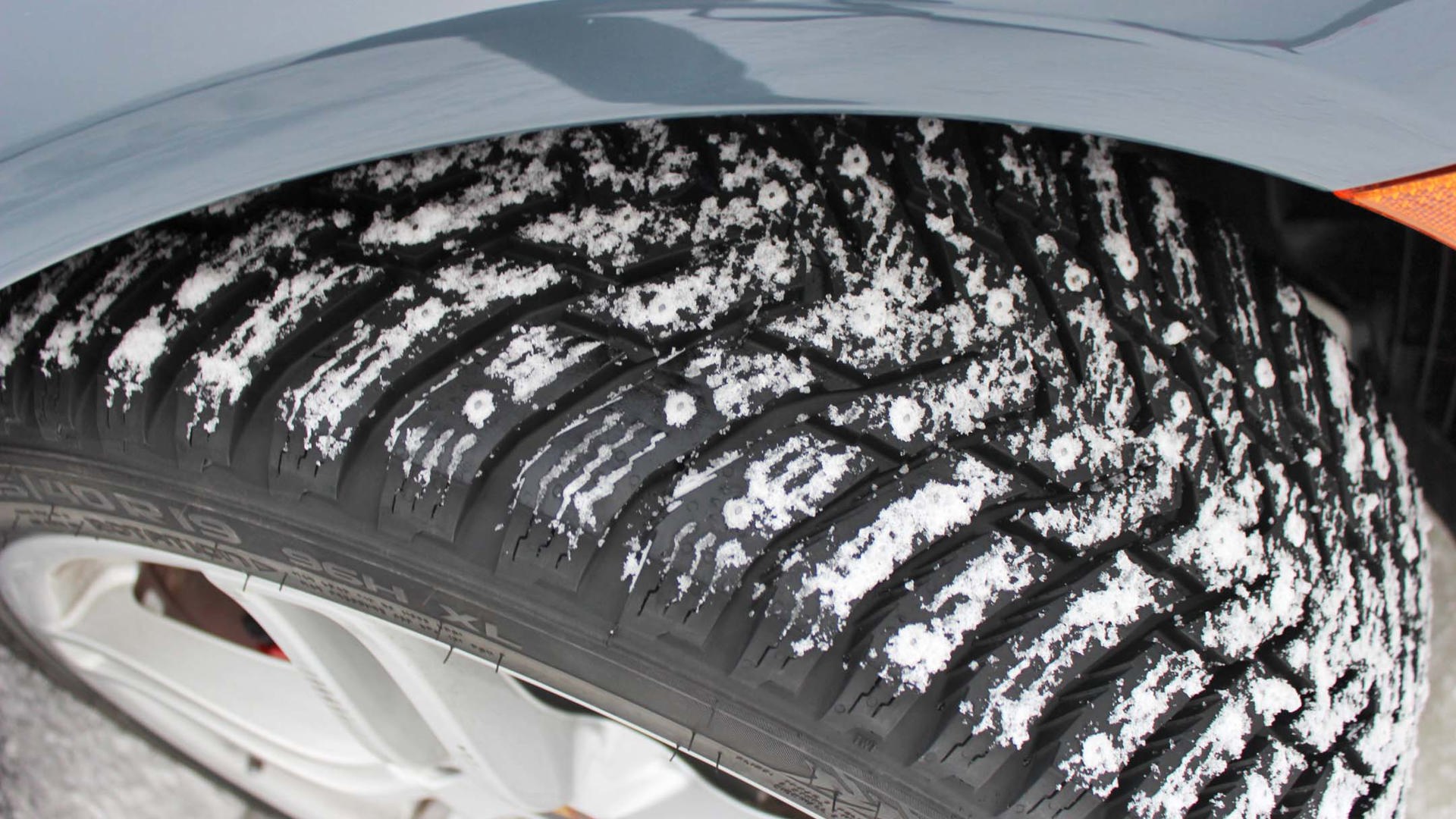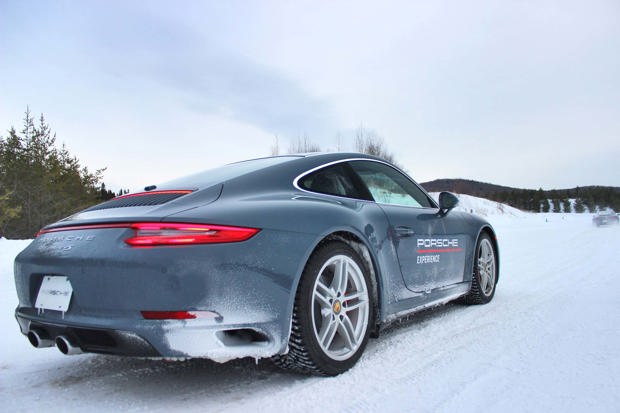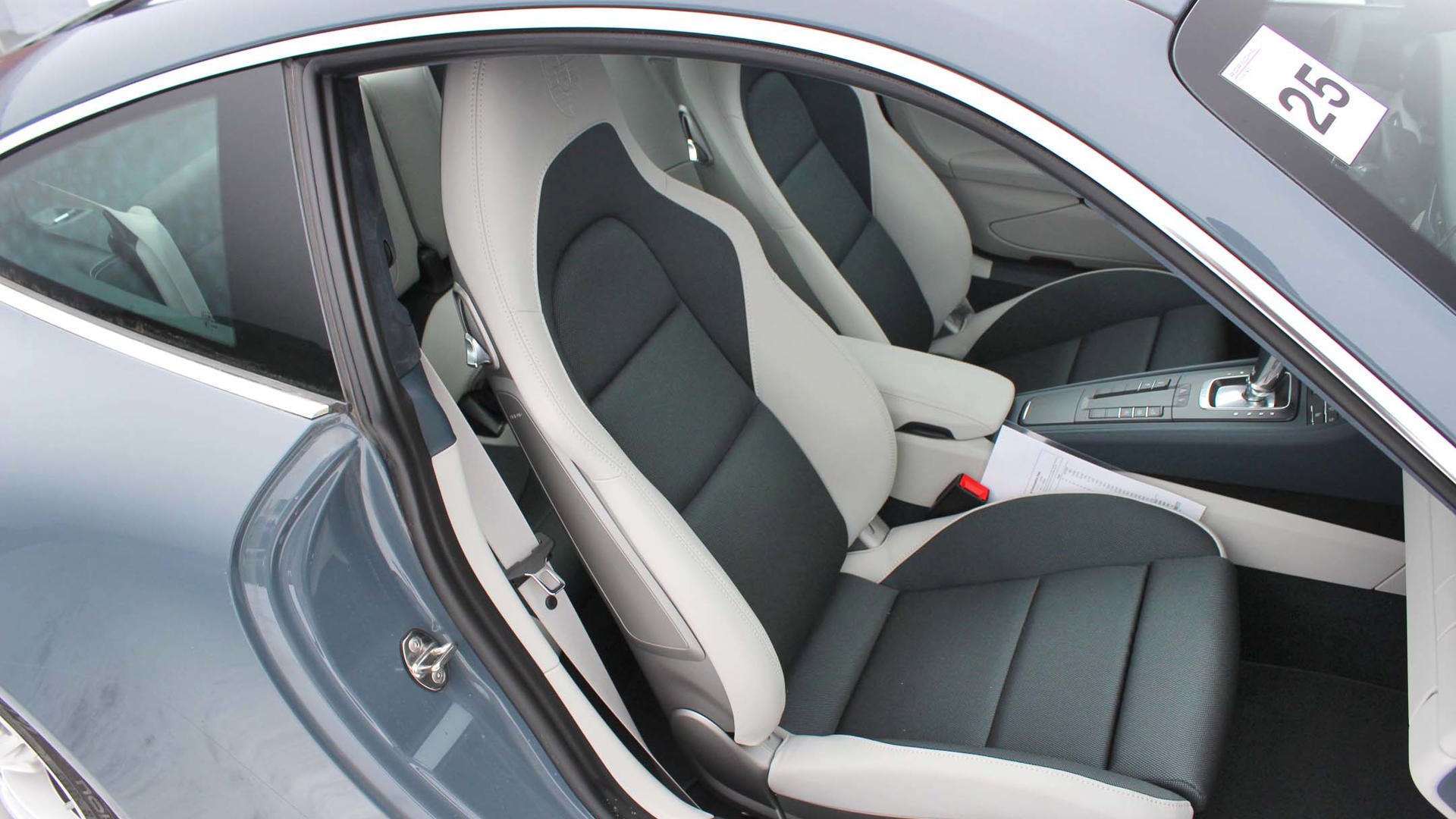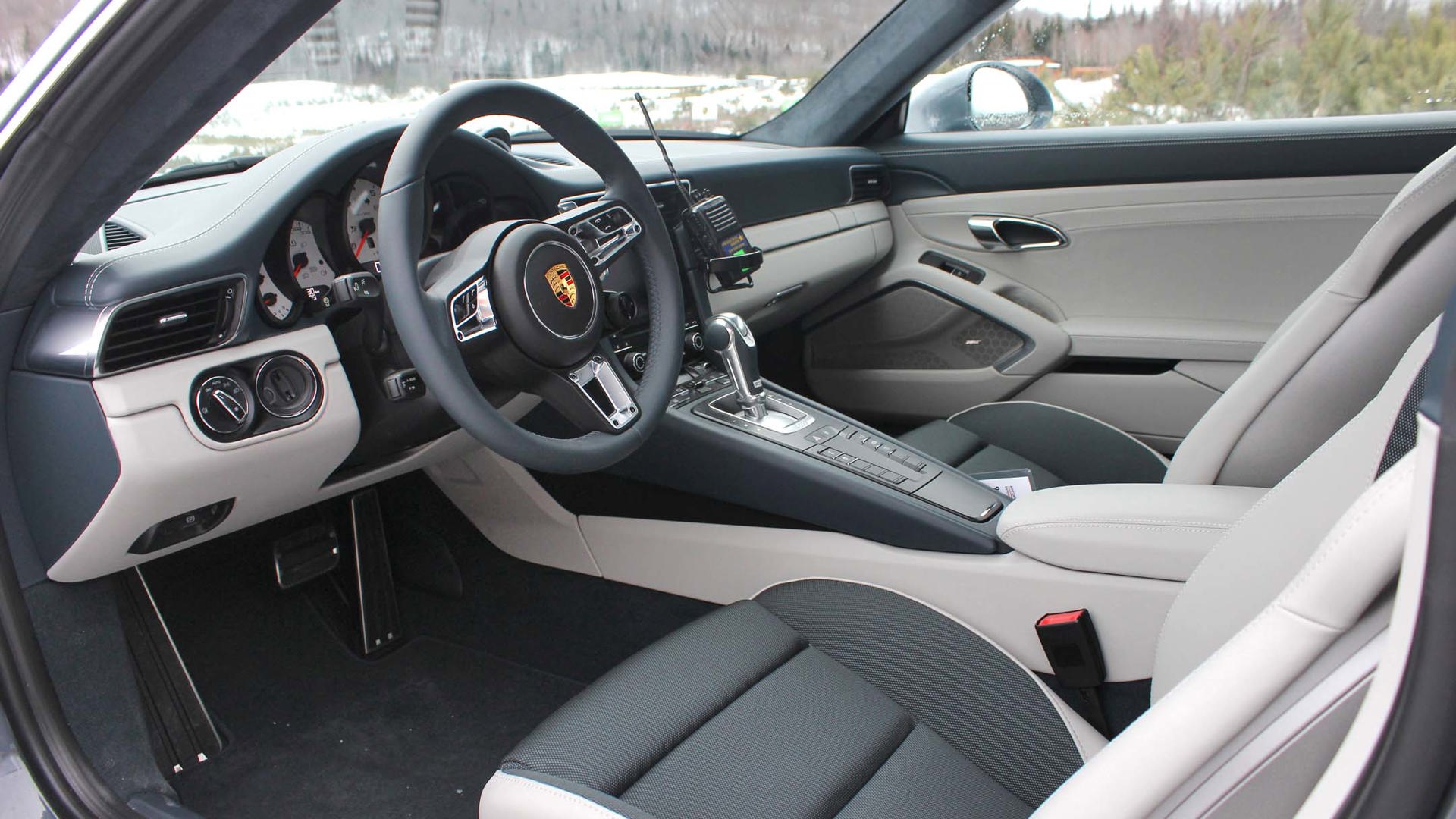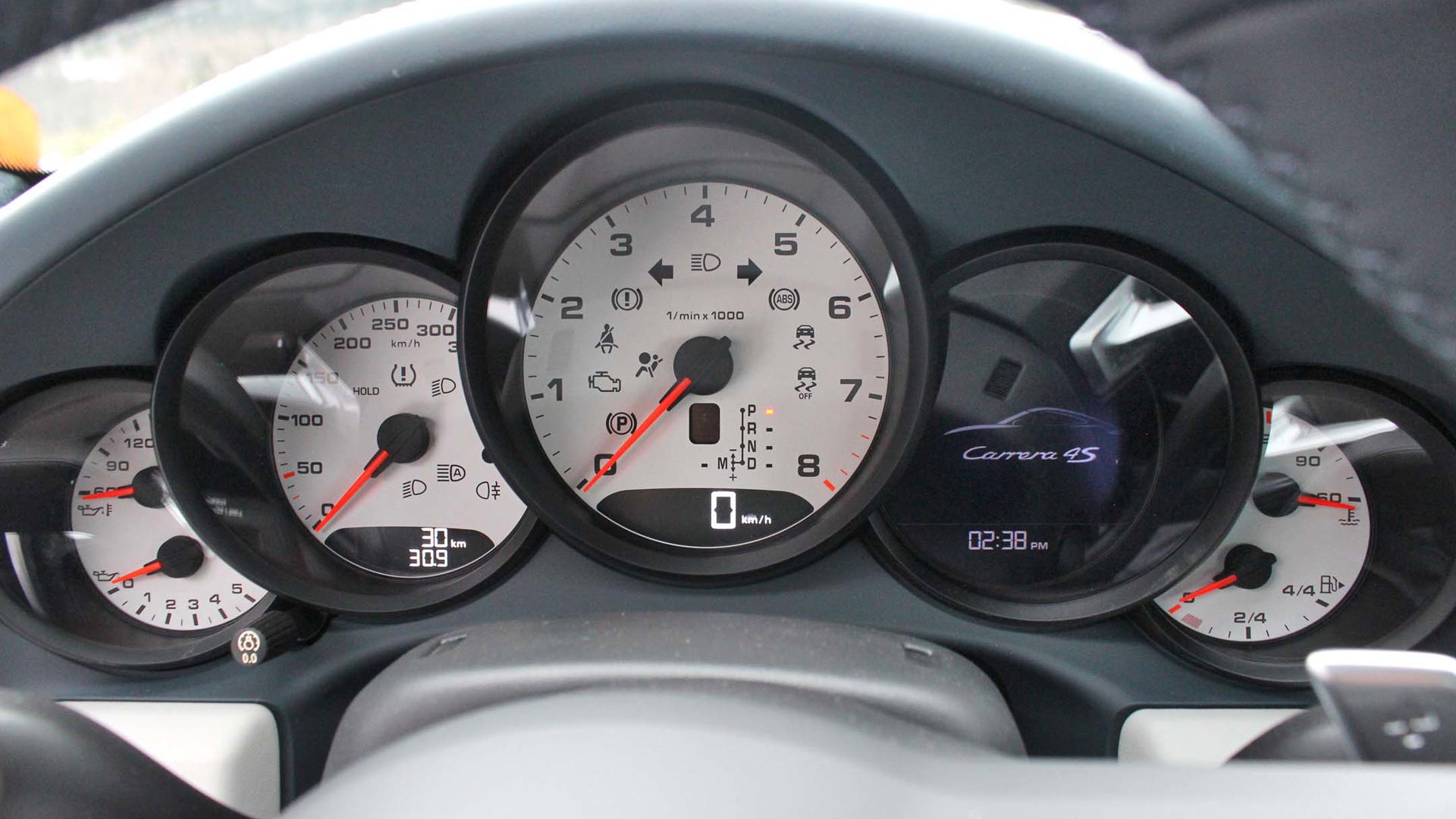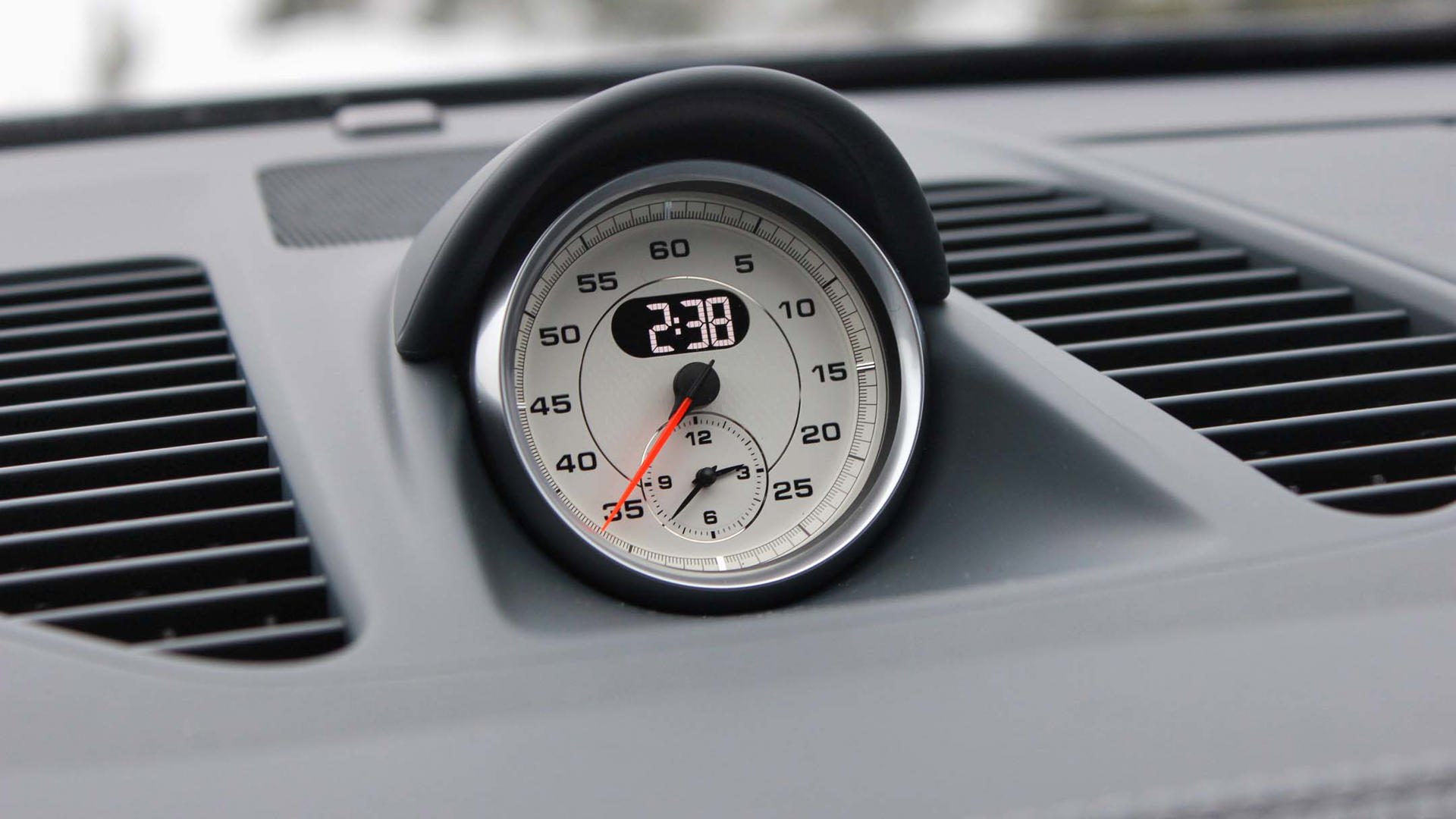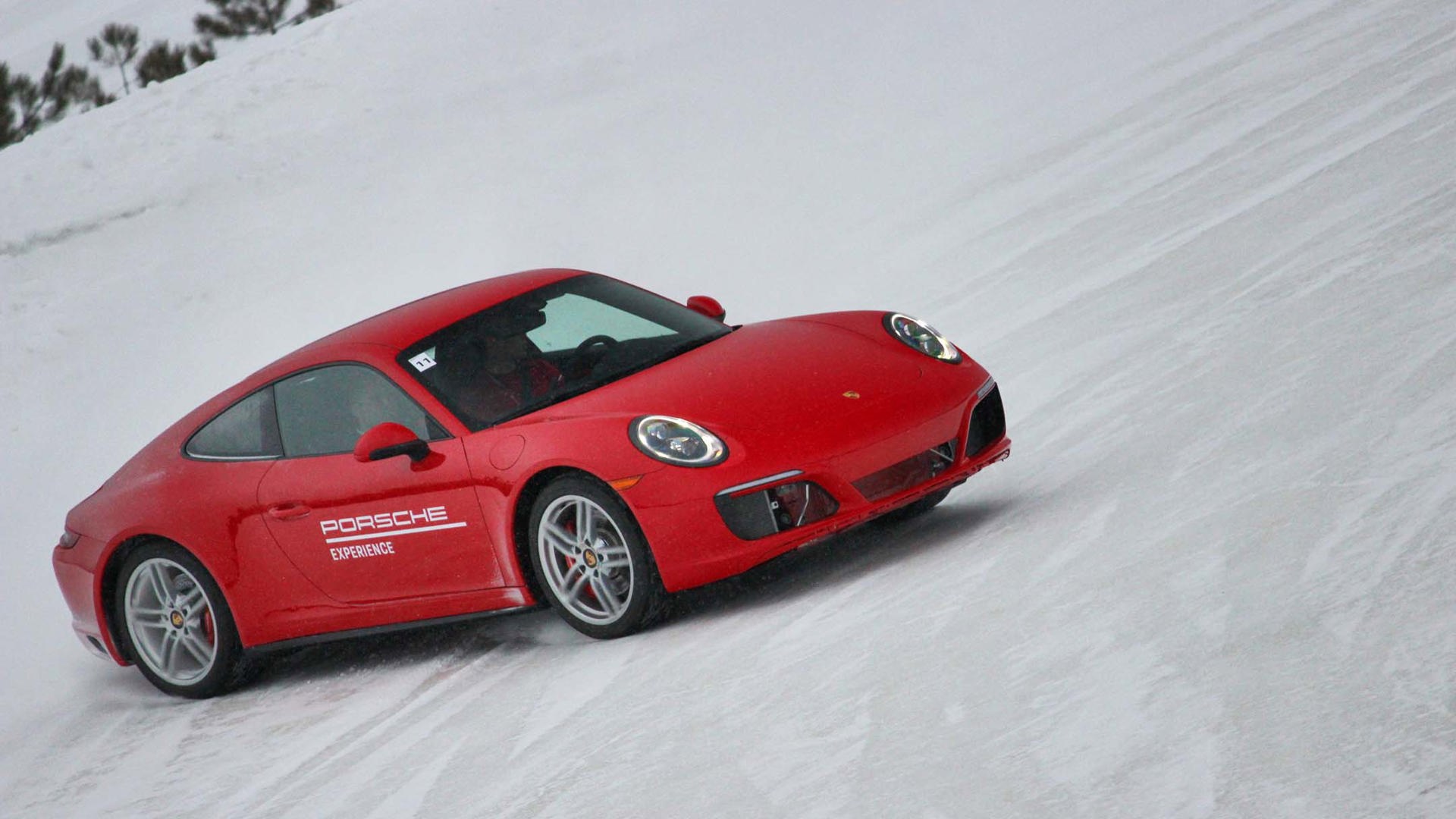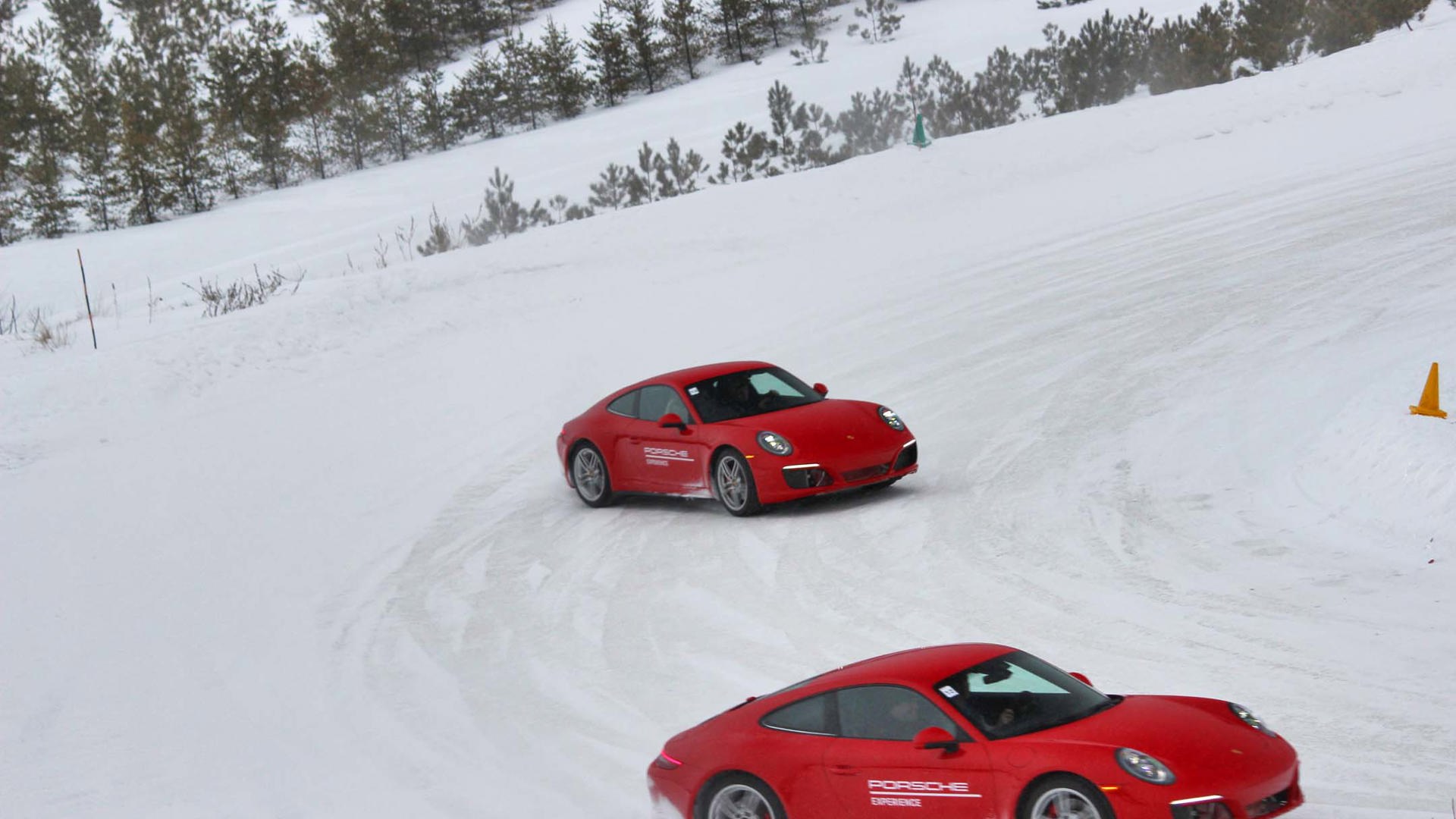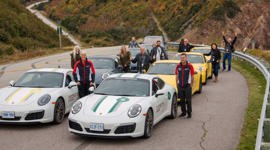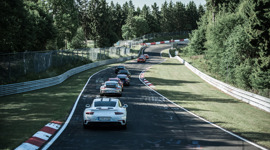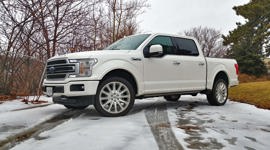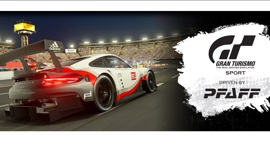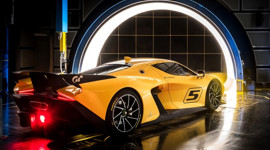“It’s like a fantasy land,” says Jonathan Urlin, Operations Manager at Porsche Experience Canada, which runs Porsche’s winter driving program known as Camp4. He’s right – as soon as you step off the bus, you get the sense that you’re in a dimension parallel to ours.
Initially, it’s the fact that the program is held at the Mécaglisse facility in Quebec’s Laurentian region (Canada is the program’s only North American stop; there are also programs in Italy, Switzerland, China, and Finland – where it got started over 20 years ago), a snow-covered driving mecca that we had all to ourselves: roughly 30 journalists, Porsche staff, catering staff, and about a dozen instructors – who all line up to greet you with high-fives and cheers as soon as you step off the bus.
There’s just something about stepping off a proletariat chariot and high-fiving Kees Nierop, who has competed at Le Mans numerous times and has his name on a car at the Porsche Museum. It’s an intimate group, more so than any summer camp I’ve ever been to. All the while the trackside snowbanks keep you insulated from the rest of the world. Those snow banks are immaculate – one of Camp4’s calling cards is to keep the track as pristine as possible, bereft of salt stains and mud. It’s just you, the instructors and one of the most well-known and well-engineered sports car platforms in the world.
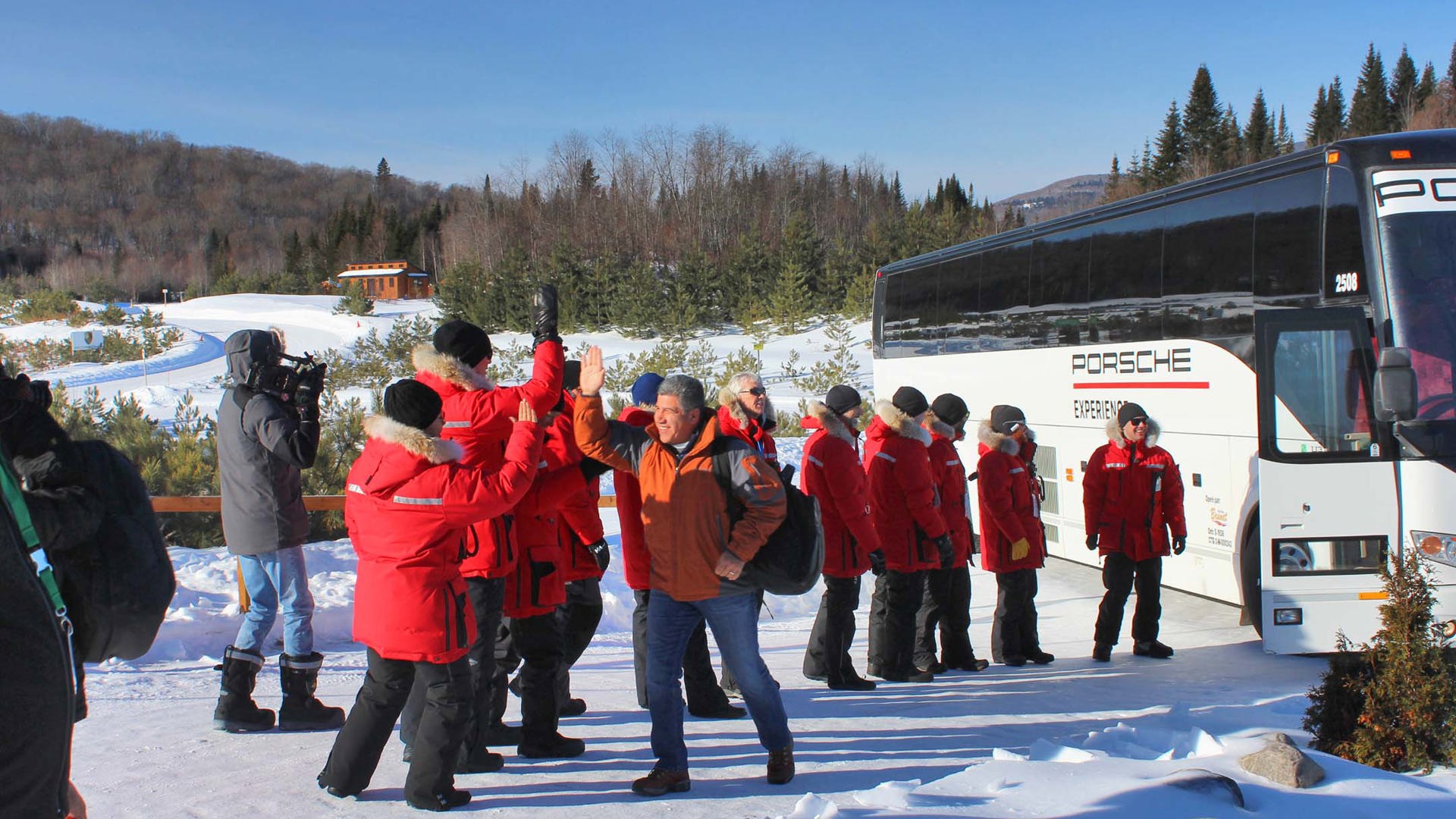
What’s it all about, though? Why has Porsche decided to outlay a part of its budget to teaching folks how to drive a rear-wheel drive 911 Carrera S through a snow drift? This is a boutique sports car brand, isn’t it? How many Porsche buyers – and if we’re honest, there seems to be more and more of them these days – actually need to learn to drive their cars in the dead of a Canadian winter?
“Something that is key to our identity is the feeling behind the wheel of one of our sports cars,” said Jennifer Cooper, Marketing Events Manager at Porsche Cars Canada. “Plus, many people drive their 911s all winter. It’s a capable vehicle year-round.”
Which is why for this year in Camp4 (there are actually three levels of the Porsche Winter Driving Experience: Camp4, Camp4 S, and Ice Force, the latter a masters type of program that has participants driving race-car-based models such as the GT3 RS) only 911 models – the Carrera S and Carrera 4S – are being offered; the 718 models are no longer part of the deal. According to Cooper, however, that’s not because they can’t be driven in the snow, it’s just that over the course of two to three days, participants are being asked to learn many unfamiliar tasks, and throwing a mid-engine, RWD platform on top of all the drifting, understeer correction, and oversteer correction lessons was just asking too much.
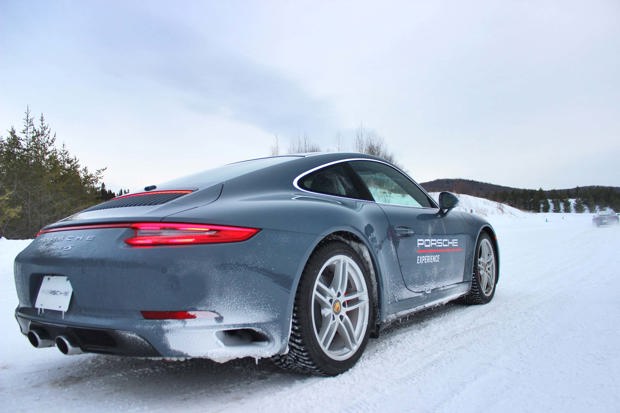
That’s fine by me; while I’ve had the opportunity to experience Camp4 when they still ran the Cayman, the more time I spent at this year’s event in the 911, the more I became focused on improving my skills behind the wheel of that car, and at the end of the day, I got more out of the experience as a whole.
We’ve talked about the cars themselves, and while I’ve driven them in much more normal conditions – conditions that, you know, don’t feature a partially frozen track and Nokian Hakkapeliitta tires embedded with 1.5 mm studs – driving them here is a very different experience.
One of the biggest factors in this regard is the sense of speed. Doing 50 km/h on a paved road – in a 911 or any other modern car, for that matter – is no big deal. When you’re doing so on a snow pack, however, and are being instructed to “go faster because you won’t get a good drift going at that speed,” it’s a little different. It completely ratchets up the immersion and challenge, and plays into that “fantasy” theme we talked about earlier.
“In these conditions,” said Cooper, “the speed and feel from the car is heightened.” She’s 100 percent right and as an added bonus, driving at these moderate speeds surrounded by squishy snow banks is as close as you’re going to come to a real-world “reset” button. When you consider the studded tires and the speeds we were travelling, it becomes easier to understand how the danger levels are significantly lowered over what you’d encounter on a dry racetrack or on public roads.
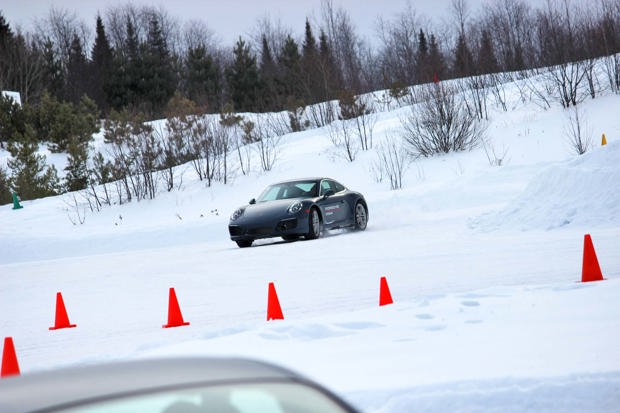
Once you’re able to wrap your mind around that, everything comes into focus and you’re able to concentrate more and more on perfecting your line through the slalom or nailing a hairpin after performing a “Scandinavian flick” or “rally flick” weight transfer manoeuvre.
So, while the challenge may not come from the fear you may have of careening into the racetrack Armco barriers, there’s still plenty to be had from forcing yourself to pretty much do the opposite of what your instincts tell you. That’s especially the case when behind the wheel of the 911 Carrera 4S, which is a car whose traction and handling prowess comes into sharp focus as things get slippery. There were numerous times where I felt myself understeering and snowplowing towards the outside snow bank like a downhill skier on his first-ever run, only to snag a dab of throttle and swing the tail ’round to pull the car – and you – out of an apparently impossible situation. From outside, of course, it probably looked nothing like that, but from behind the wheel, it feels like you’re cheating physics. This is a car that makes you feel like a hero, make no bones about it.
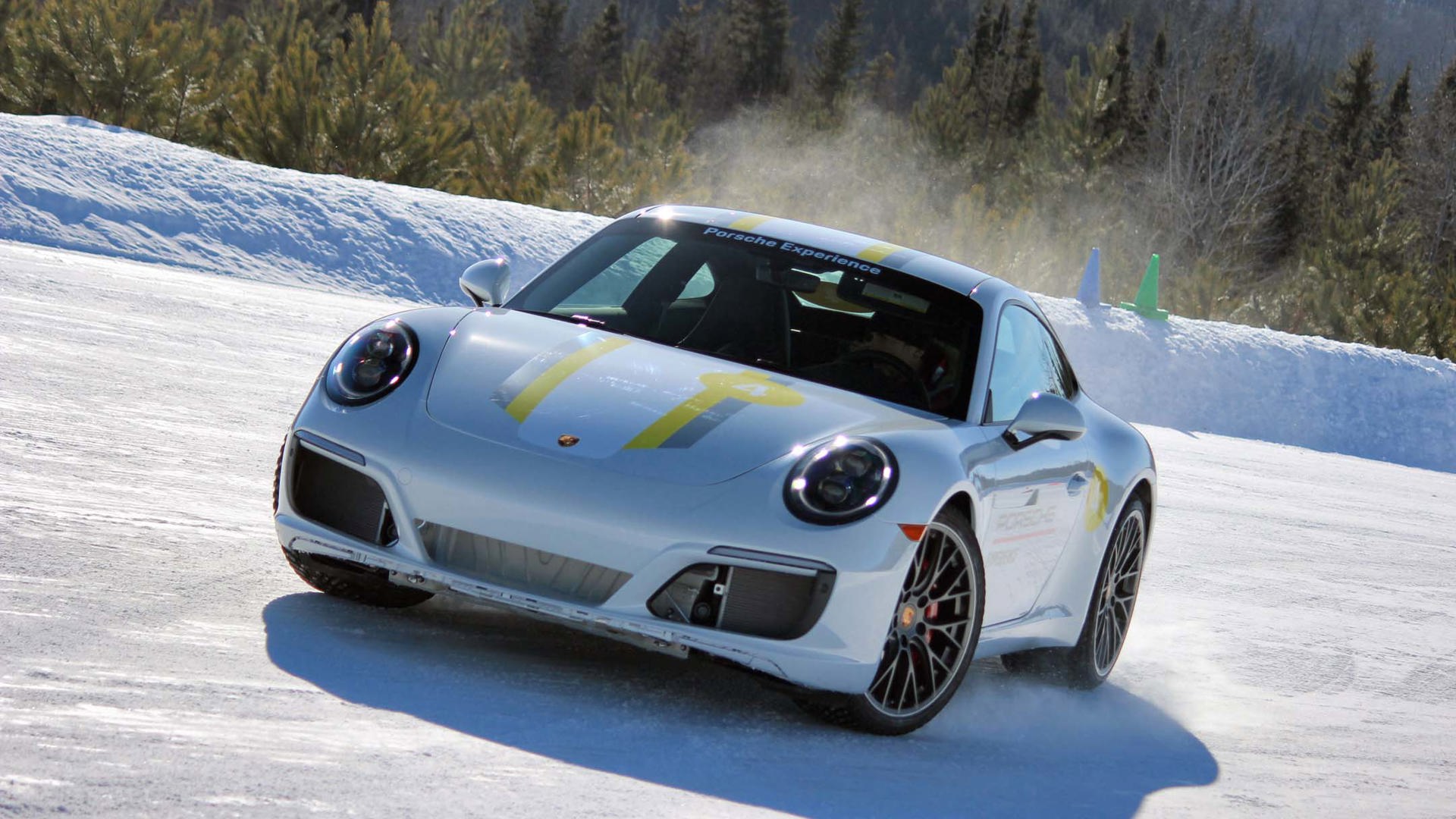
It’s so good, that after a while, just being able to ’round the bend without stuffing it isn’t enough. In time, it becomes your goal to not have the instructor say anything to you during your run (all Camp4 cars have radios inside) because if he doesn’t, it means you’ve done it right. I had the radio-silence experience once; I tell myself it’s because I nailed it, and while it was probably a technical issue, I don’t care. Same goes for the encouraging comments I got when I almost made it around an entire snow-covered skidpad in a single drift; I know that the best of the best can do this ad infinitum – just ask BMW – but again: it doesn’t matter. Getting one or two manoeuvres right can make your whole day and provides a real sense of accomplishment.
Not to mention that there are some real lessons to be learned, here. After all, you don’t need an AWD Porsche to benefit from lessons on how to reduce understeer (release the throttle to get that nose in) and avoid running into the hedges on the outside of a snowy turn. You also don’t need 420 hp under your right foot to know the right way to correct an oversteer situation – you just need to know when and where to add or reduce your throttle and brake inputs.
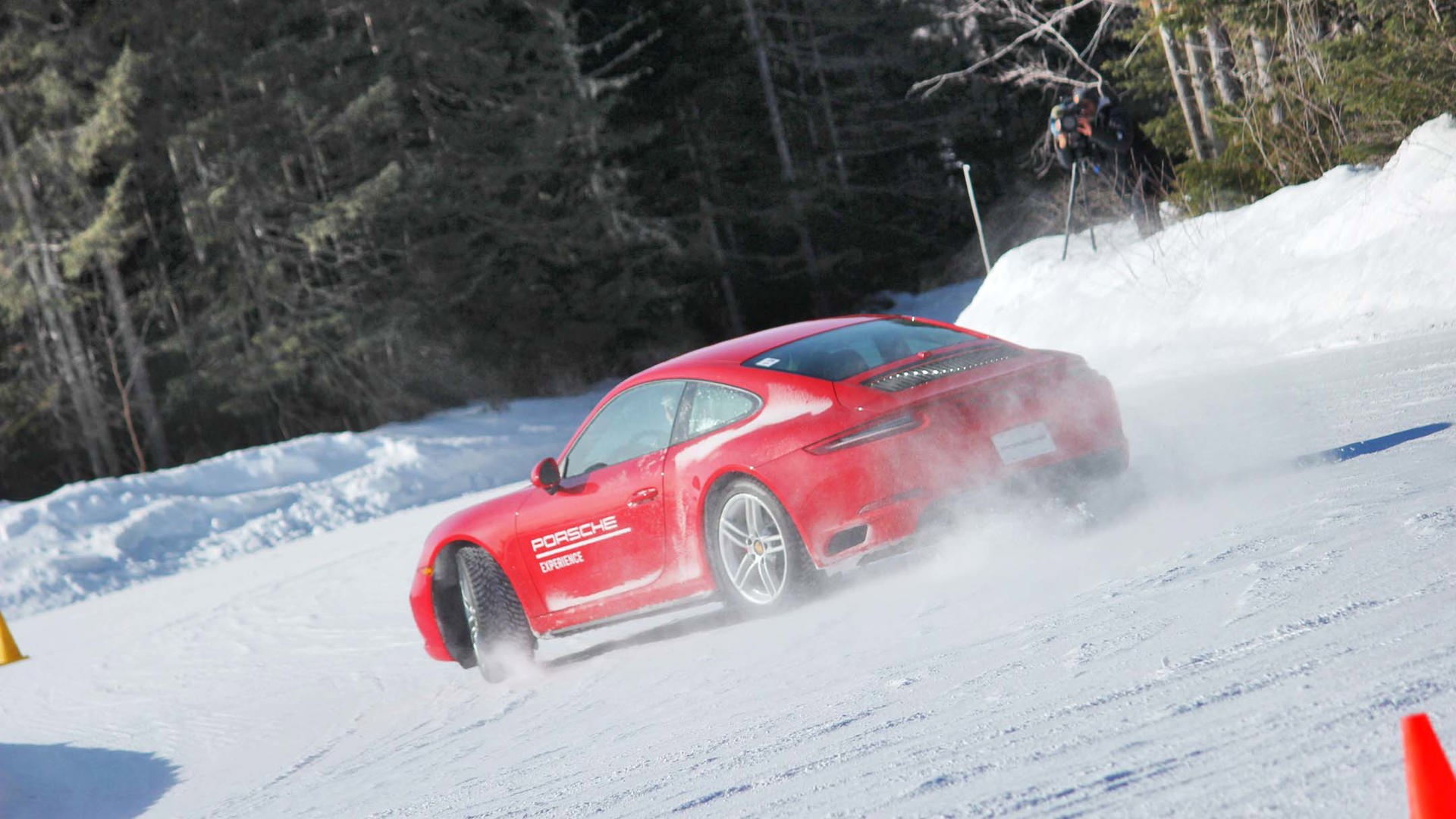
“The recovery is the most important factor in these situations,” says Cooper. And how to recover from an unexpected skid is no different from recovering from one you’ve purposely initiated. No, most of our own cars don’t have studded tires, but the rules of physics are the same, and it pays to get a handle on them.
Contact patches, friction circles (picture a circle of friction below each tire, and how it can shrink or enlarge depending on the driving conditions), lateral grip, longitudinal grip, weight distribution – all of these matter whether you’re on track or not, and all of it is taught at Camp4 before you even set out. Keep those lessons in mind, and your winter driving experience will be that much safer.
Of course, you can talk about “real world applications” all you want, but the fact still remains that this is a program that treats those as more of a “bonus”, really. It costs $5,495 for a three-day drive program, and you’re laying that dough out to do crazy things you’d never really attempt in real life, behind the wheel of crazy cars you likely won’t otherwise be driving in real life. Add the fact that you get to rub shoulders and share meals with seasoned race drivers with strong track records (my instructor, for example, is getting ready to set off for the 12 Hours of Sebring in a month and a half), and you really are in a motoring fantasy camp of the highest order.
